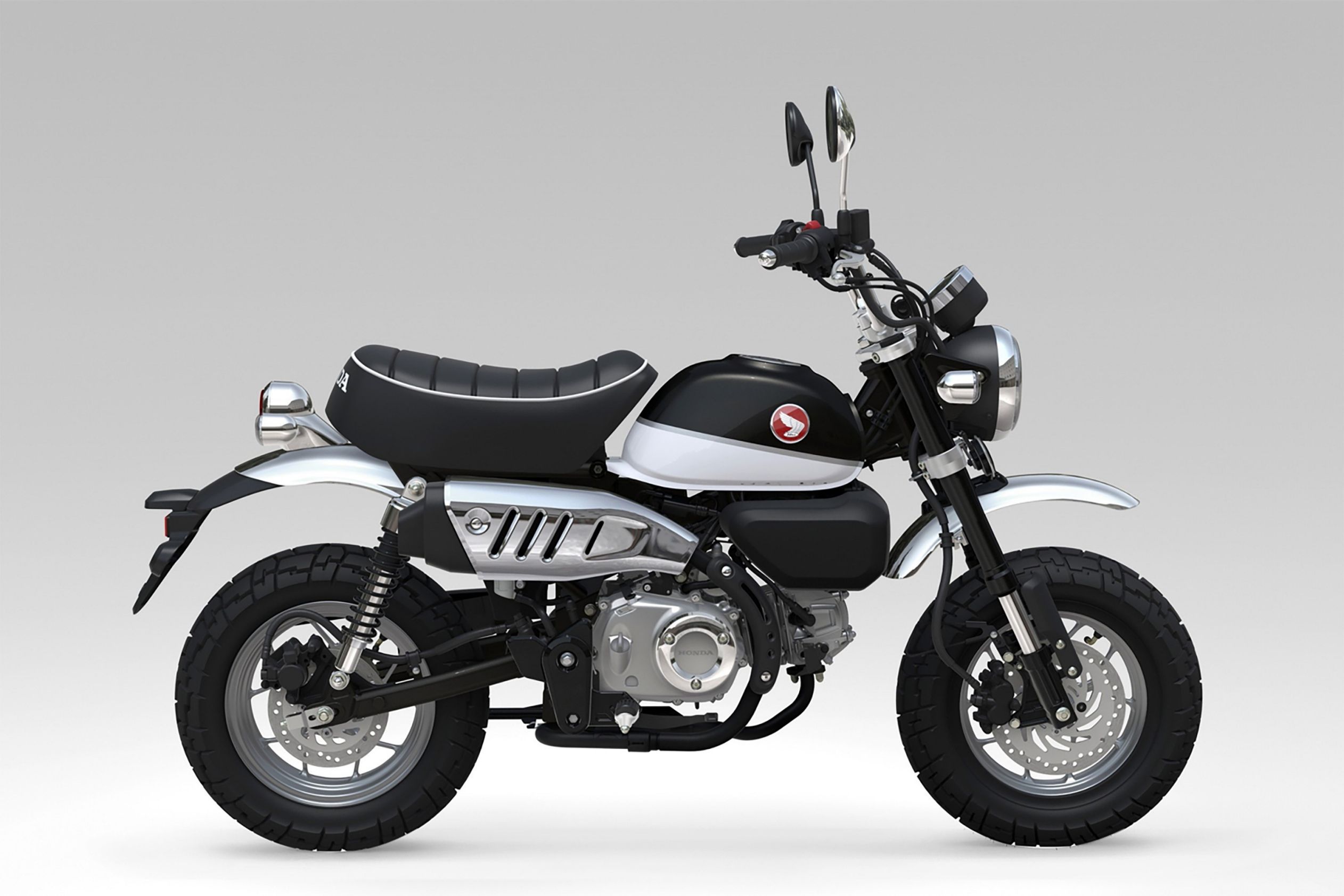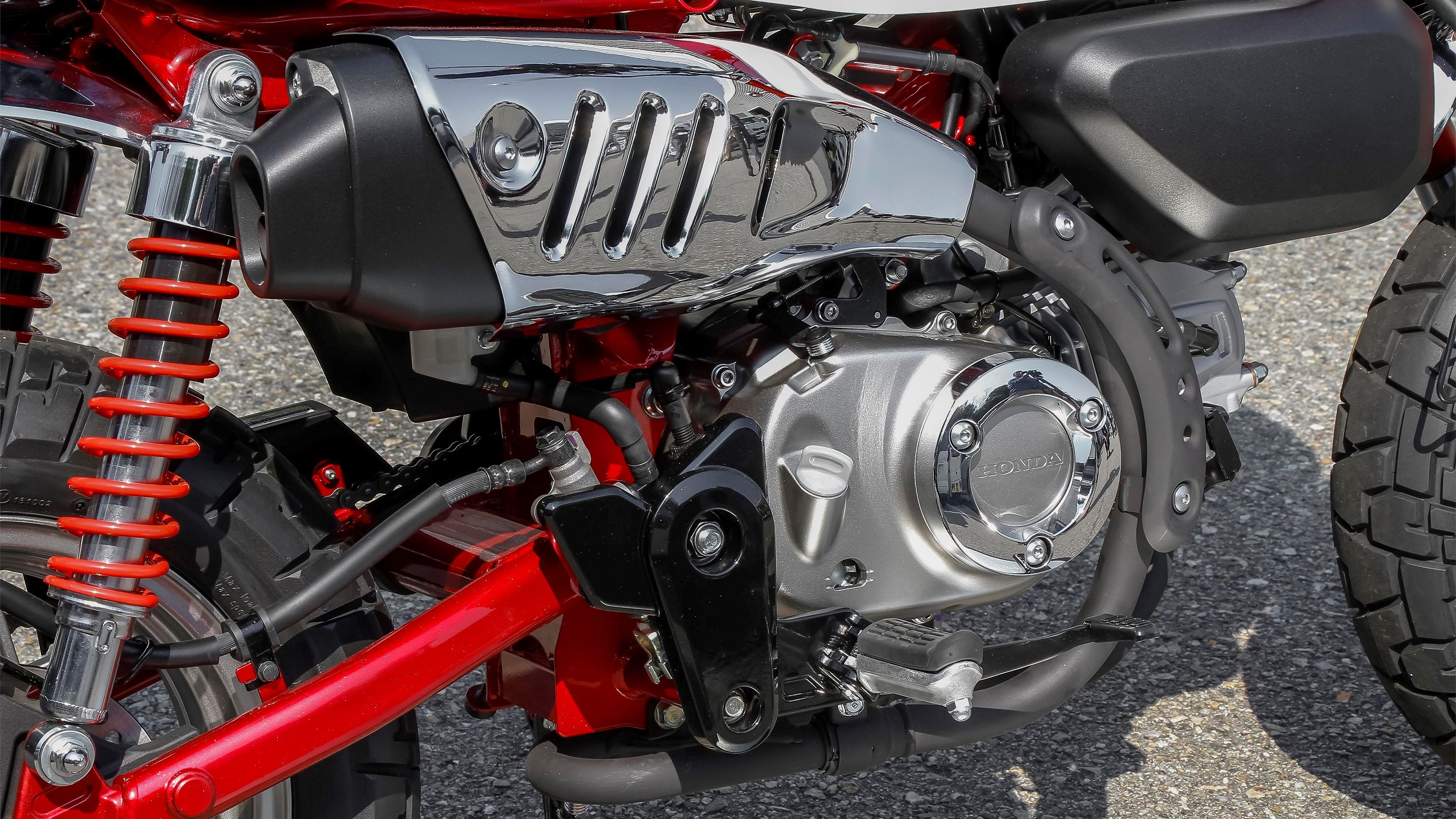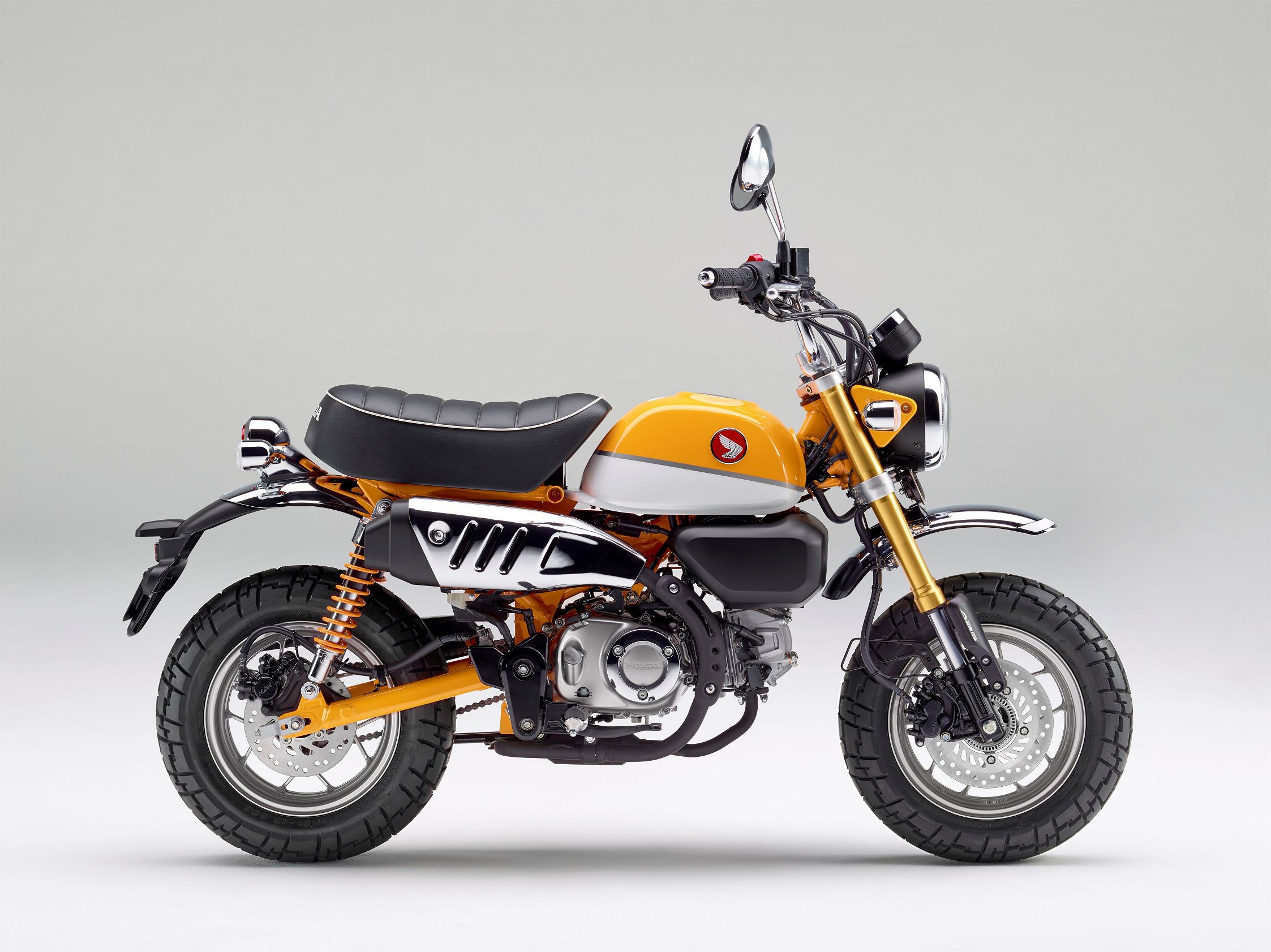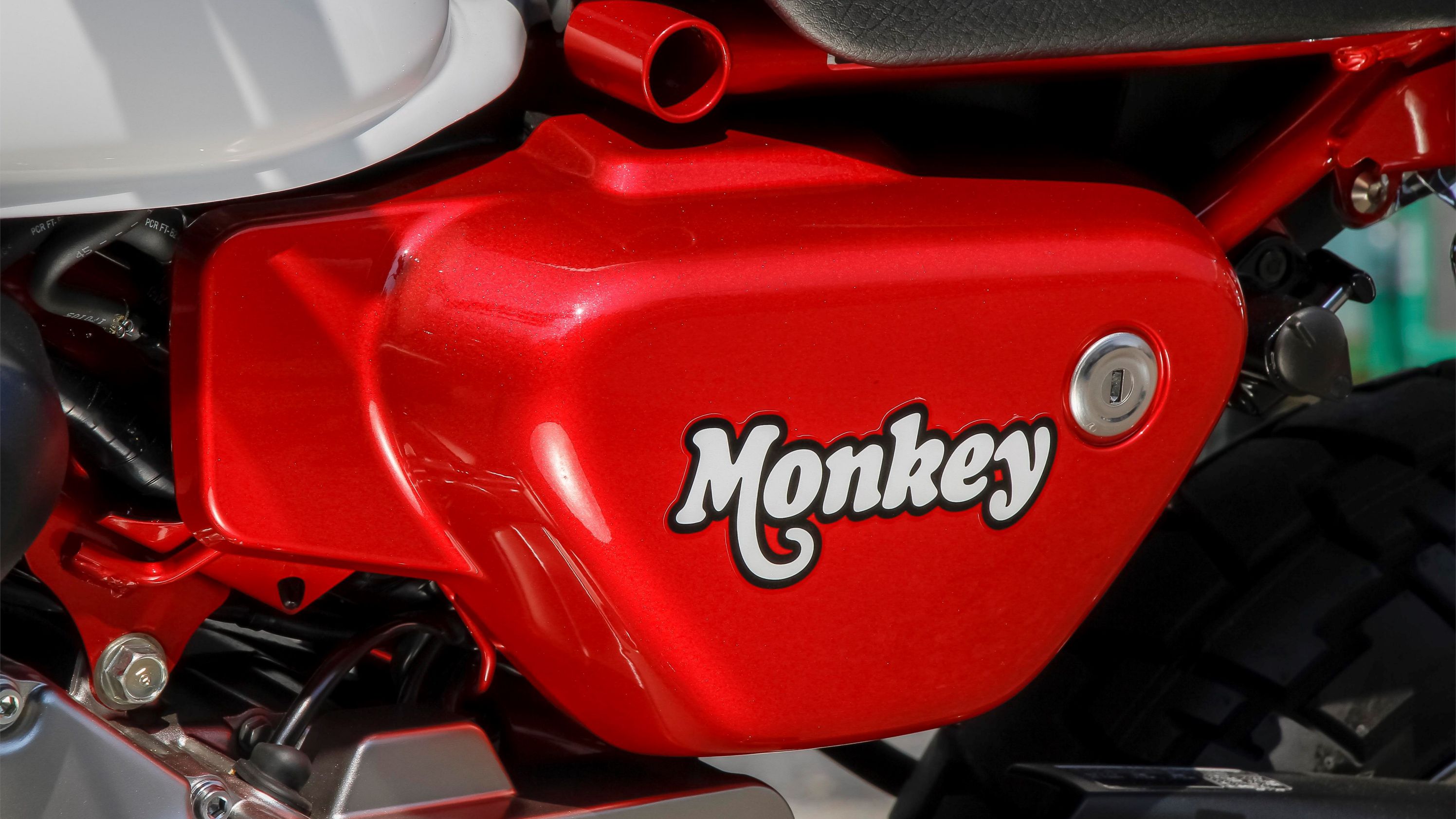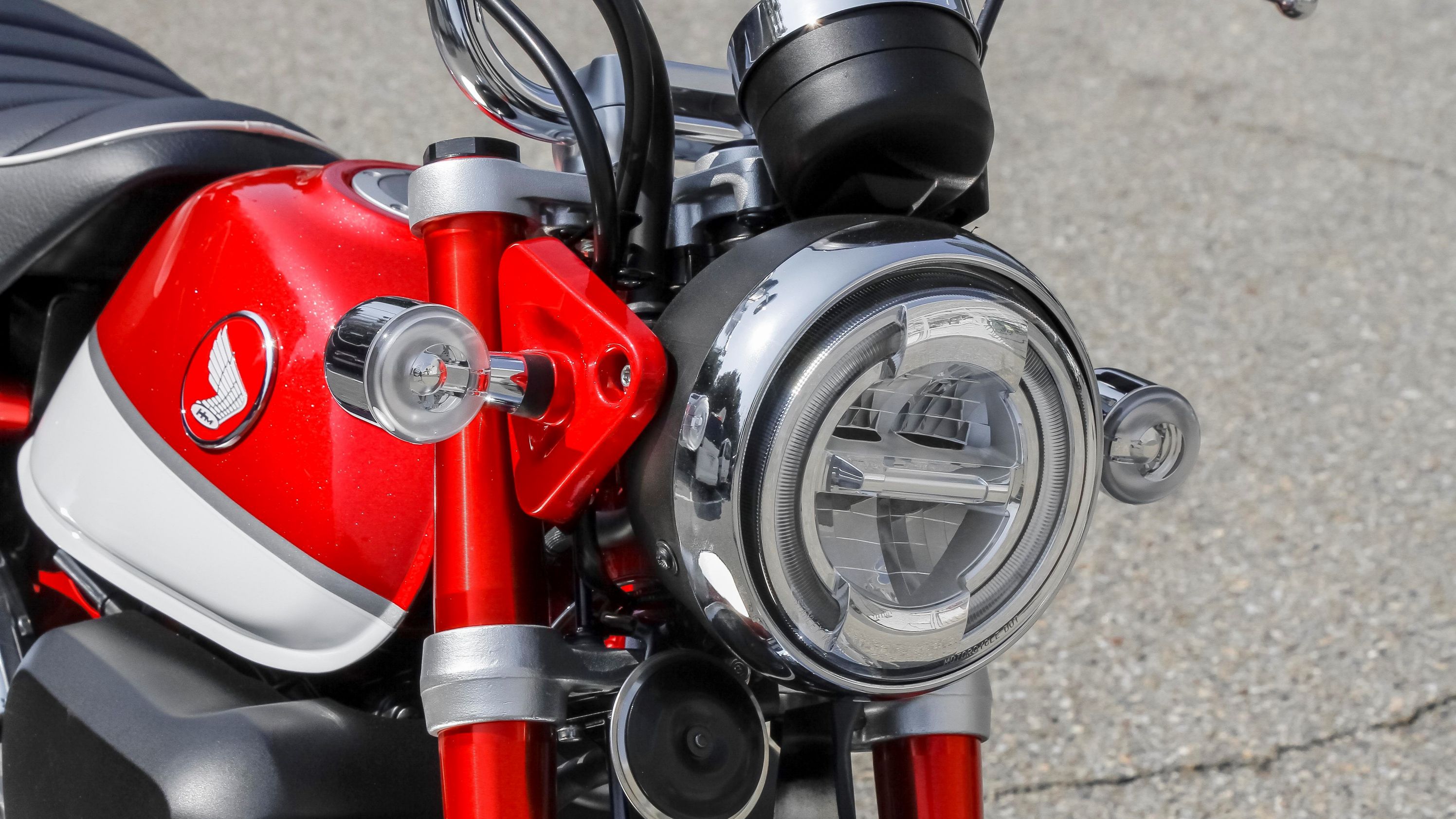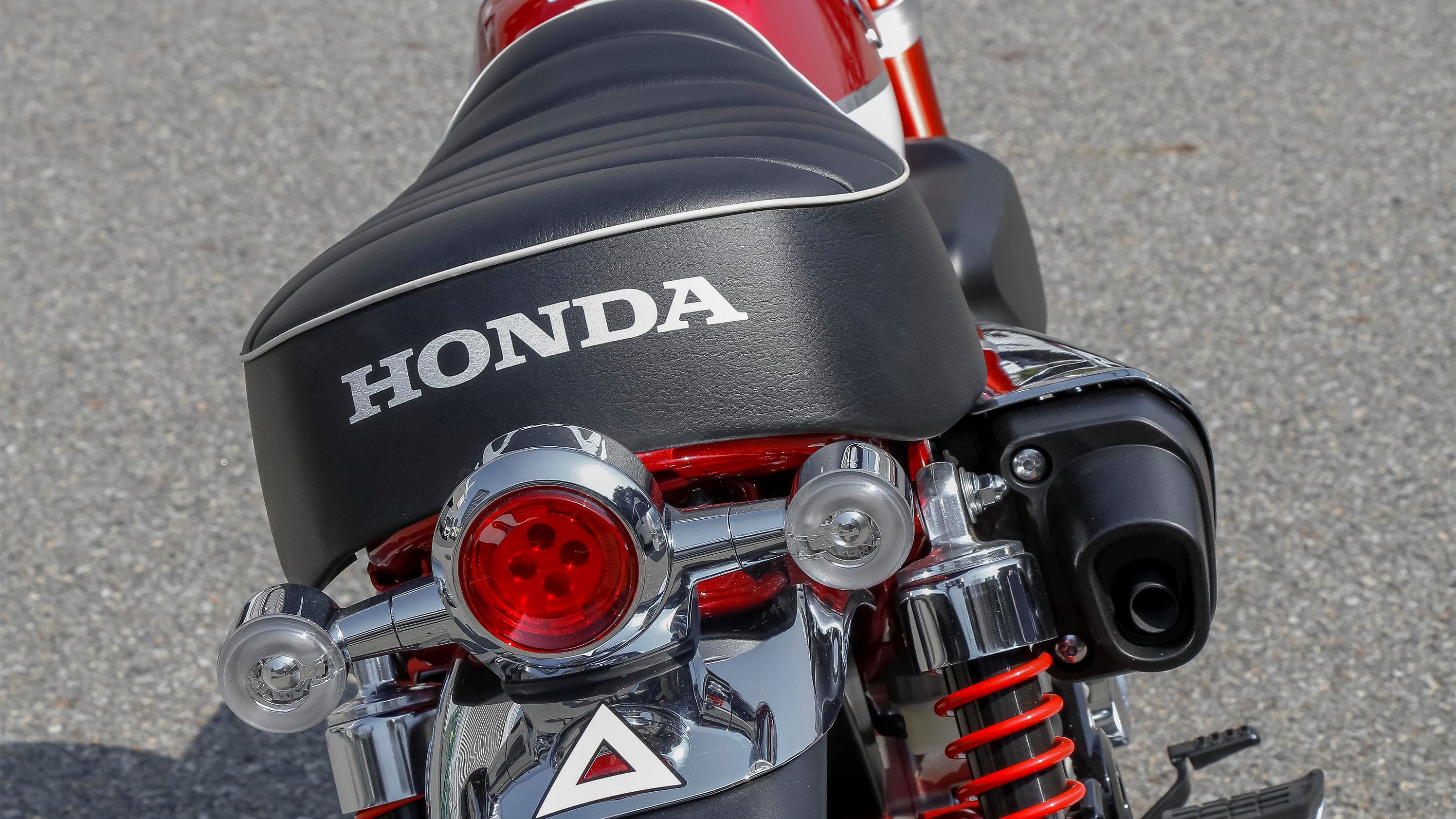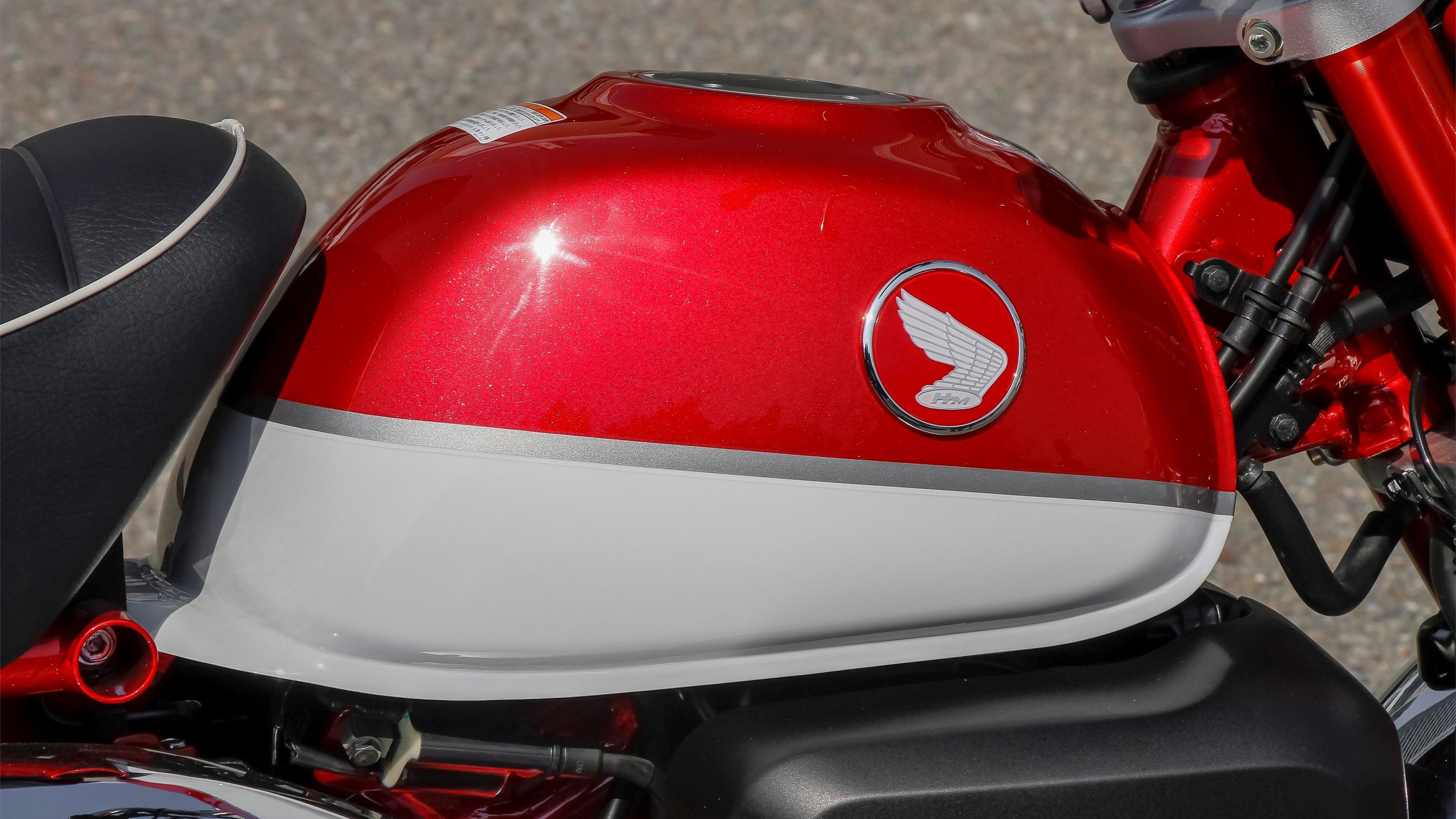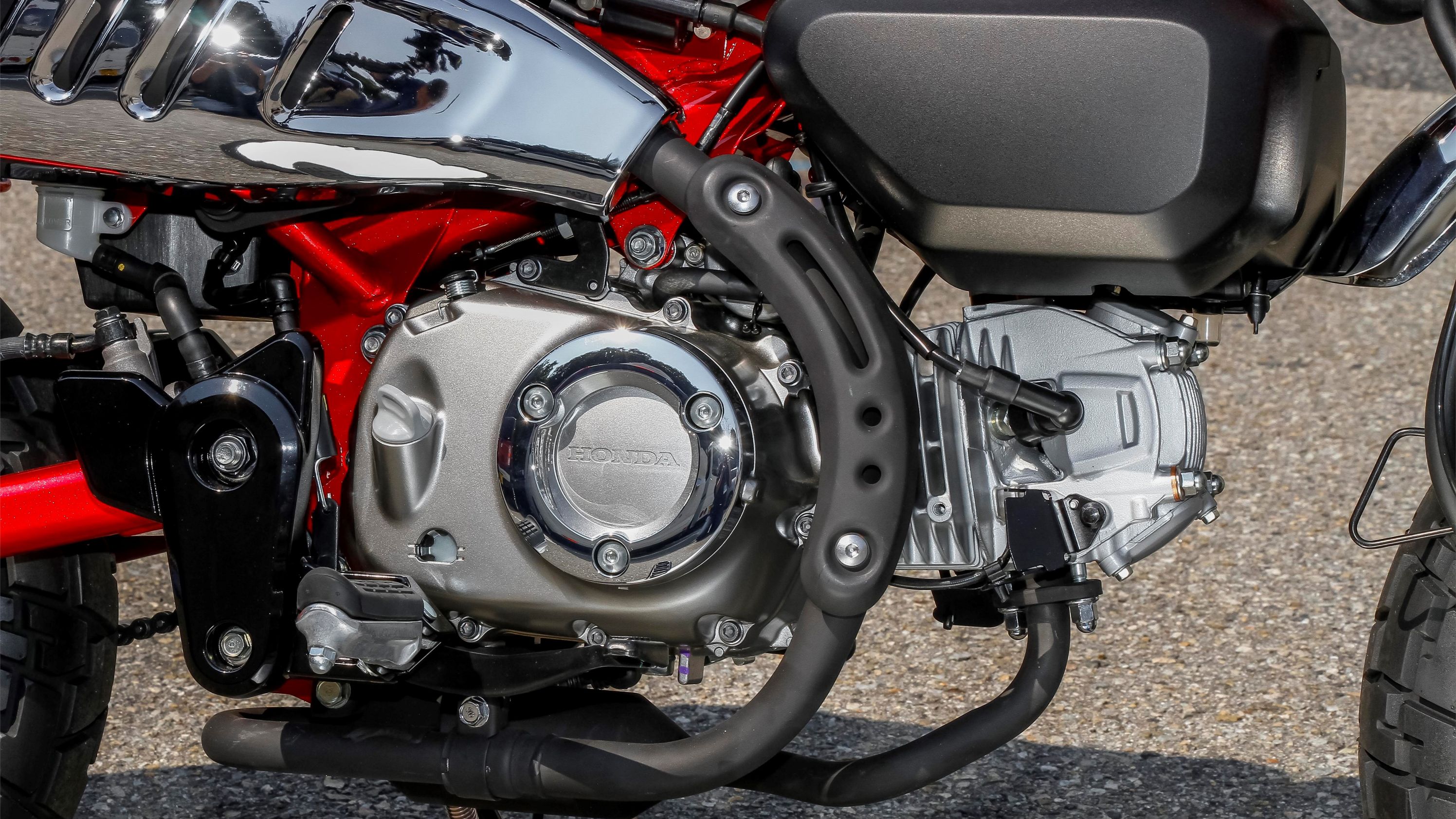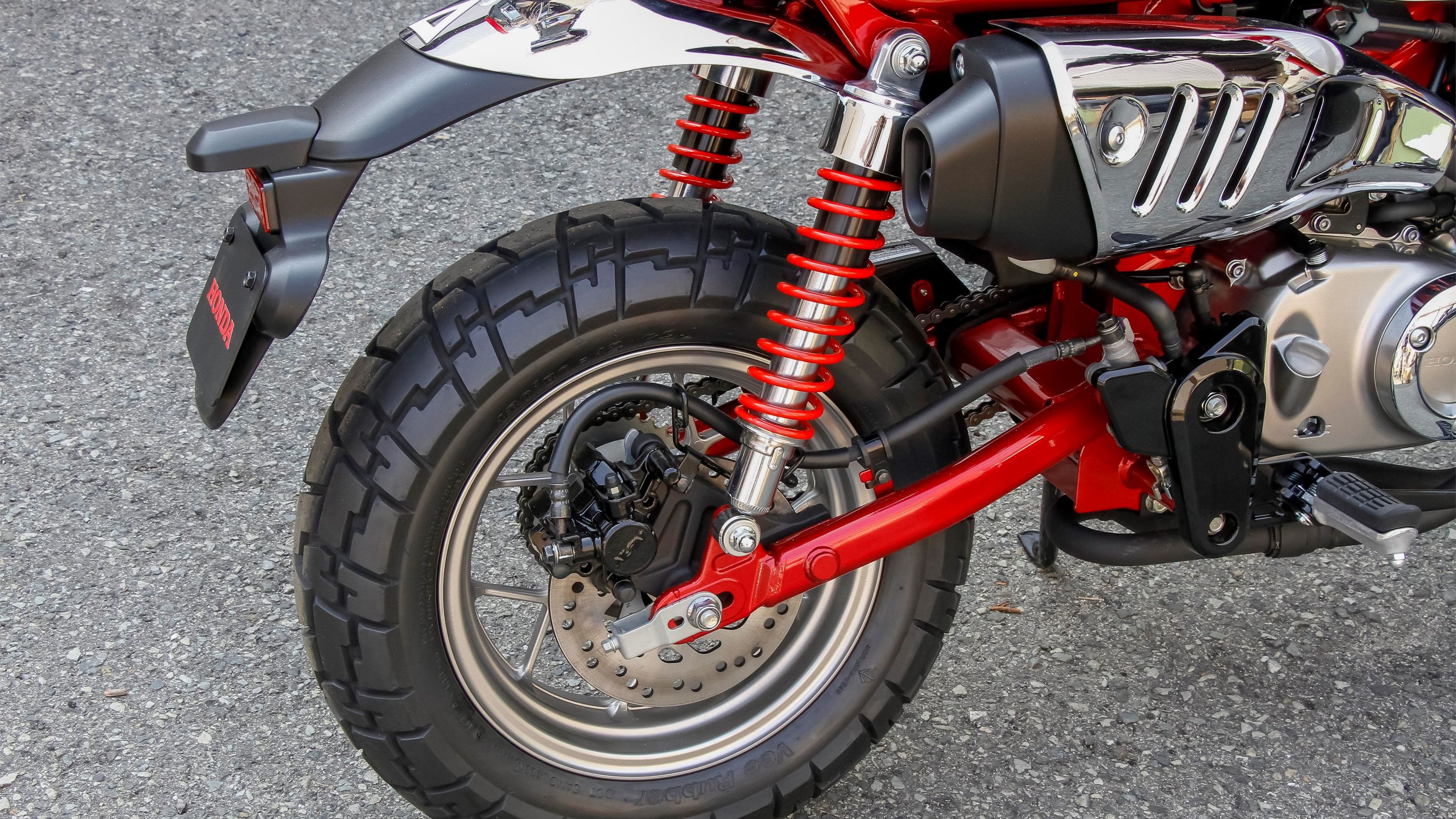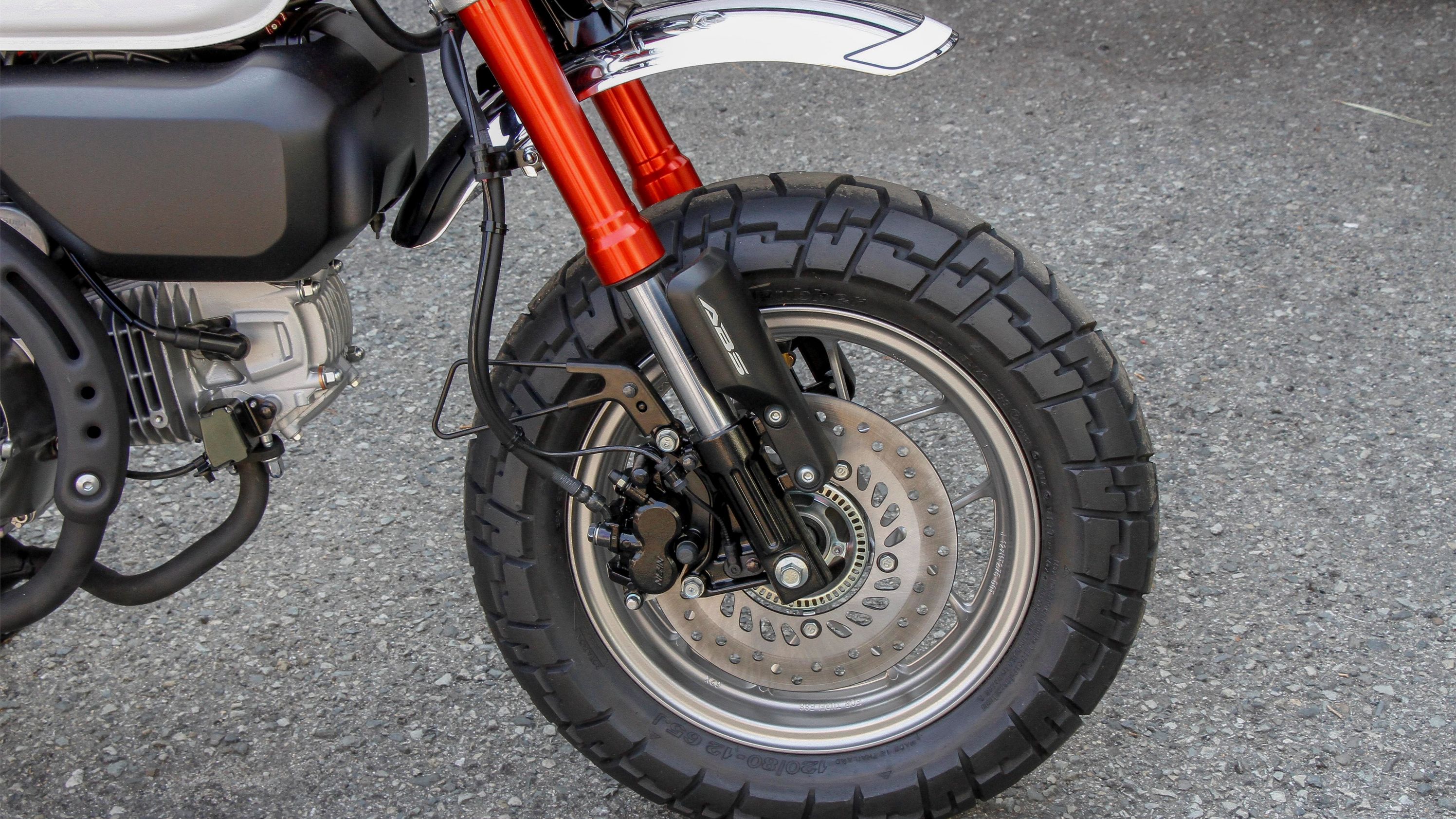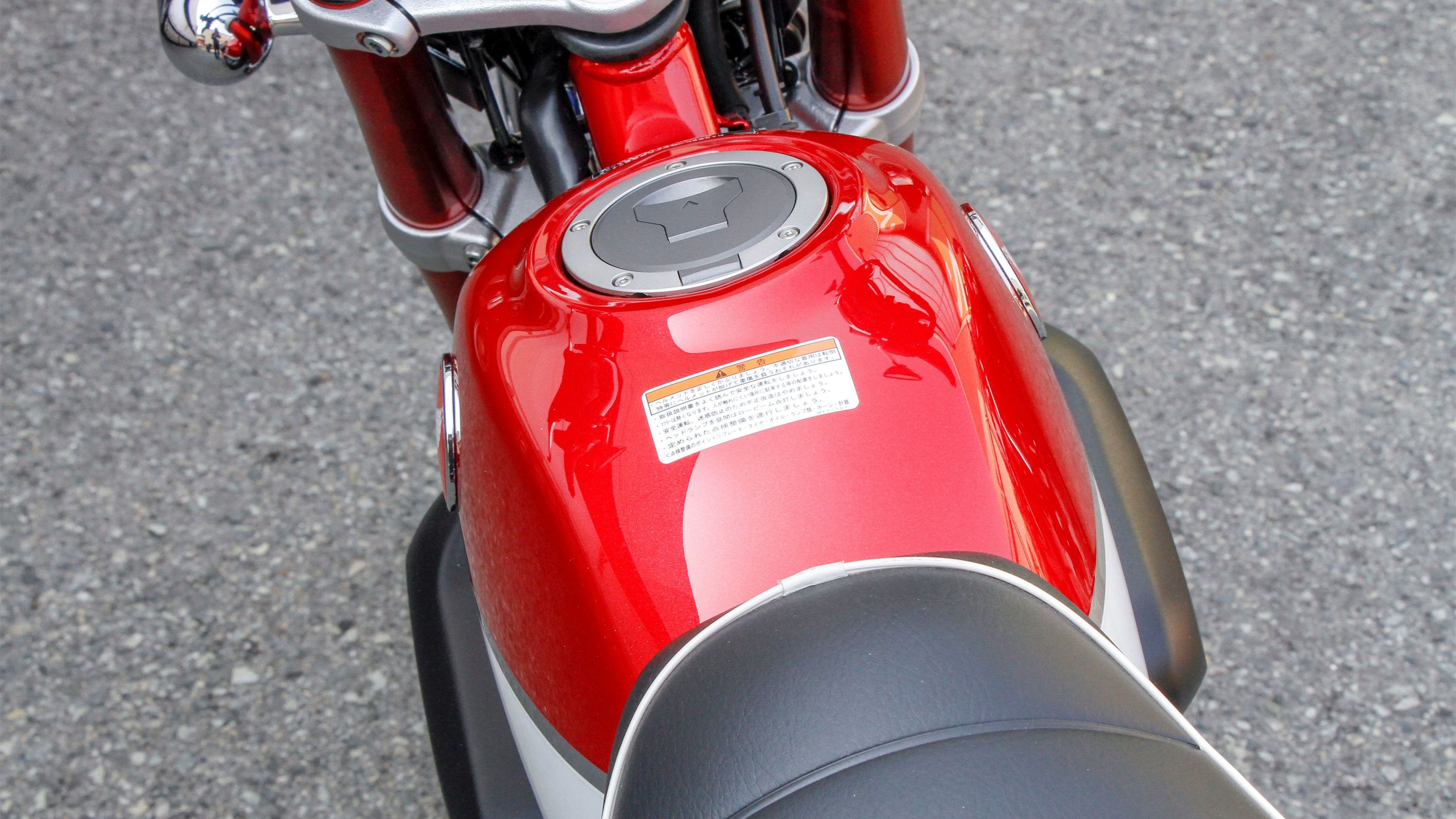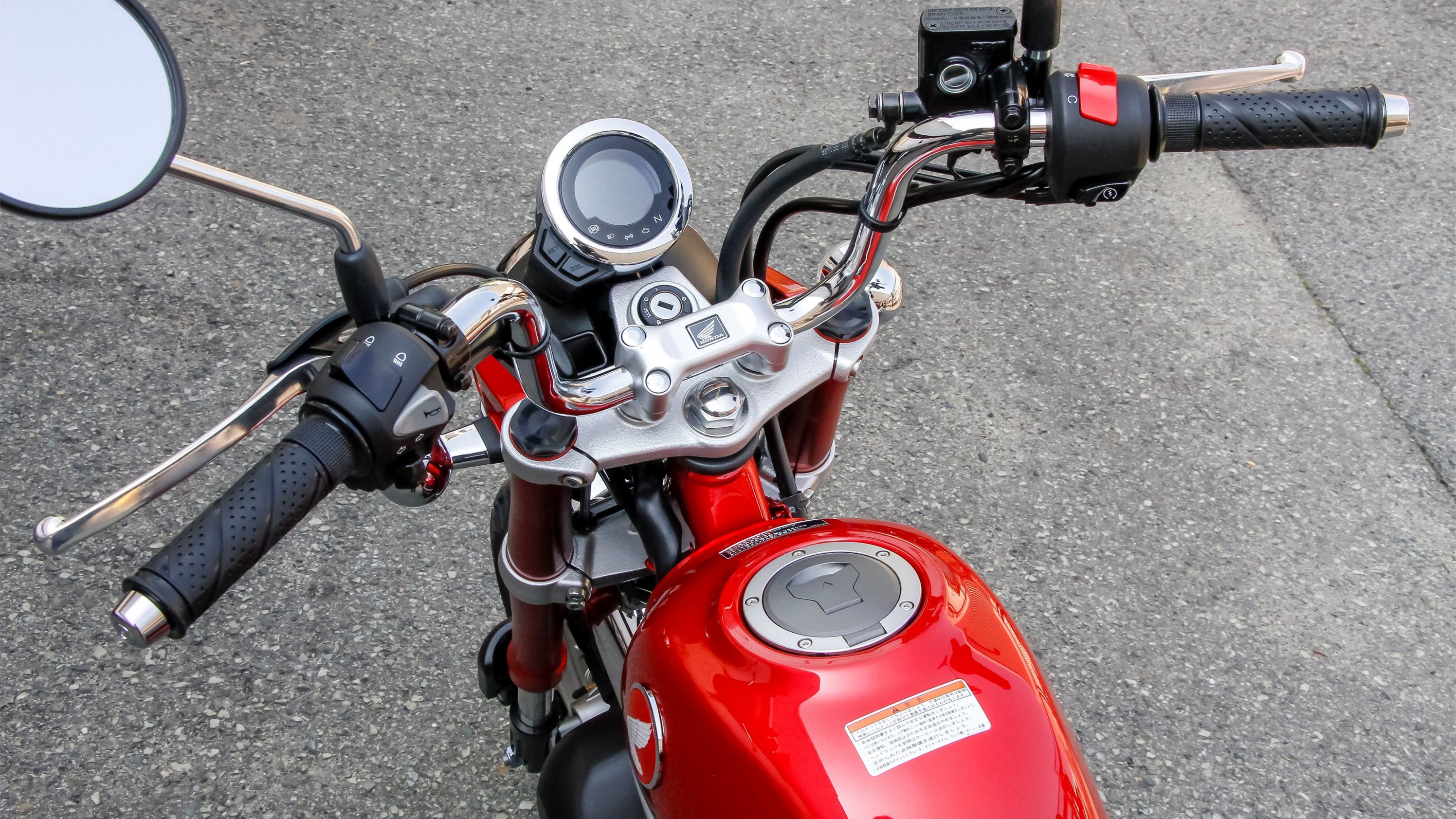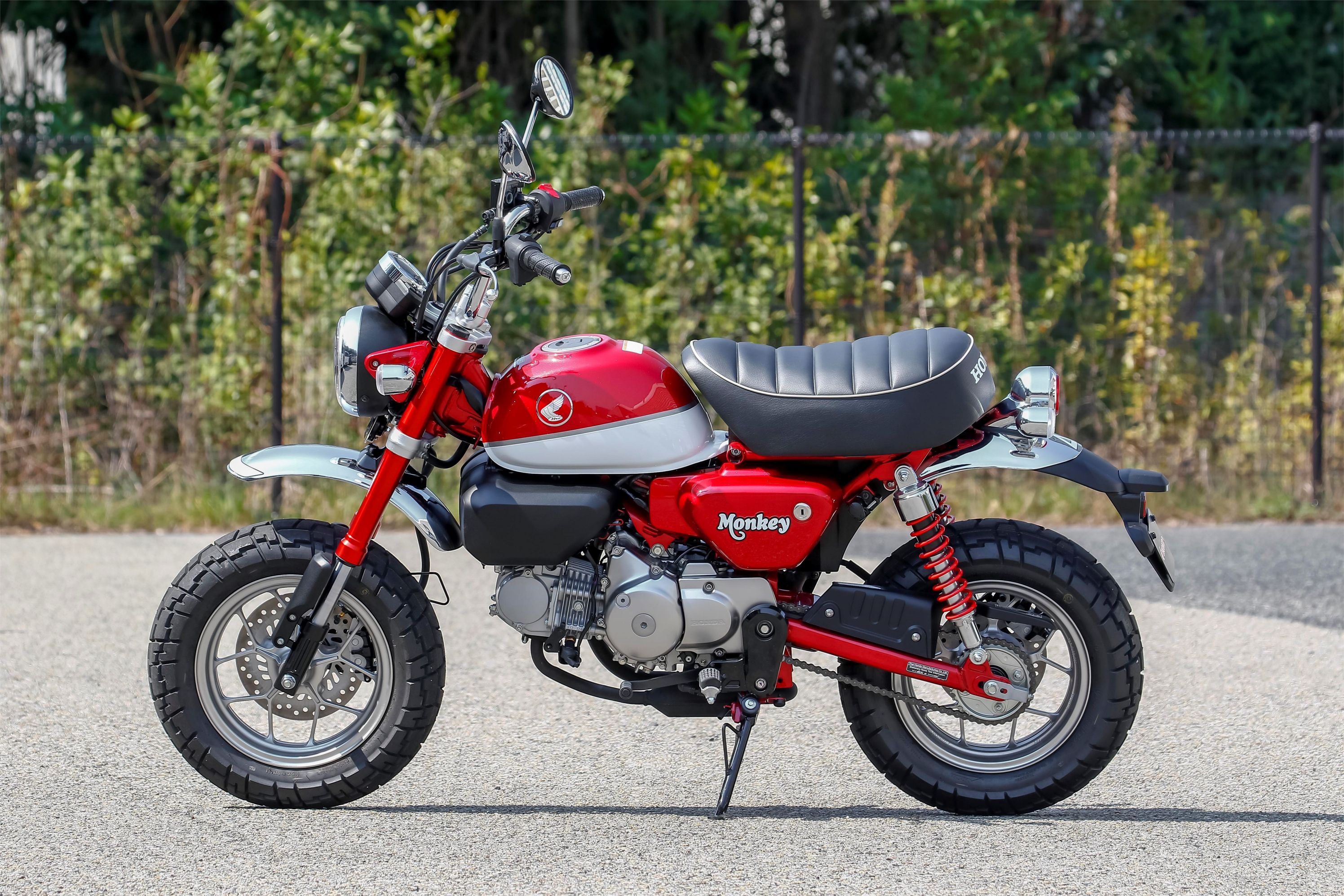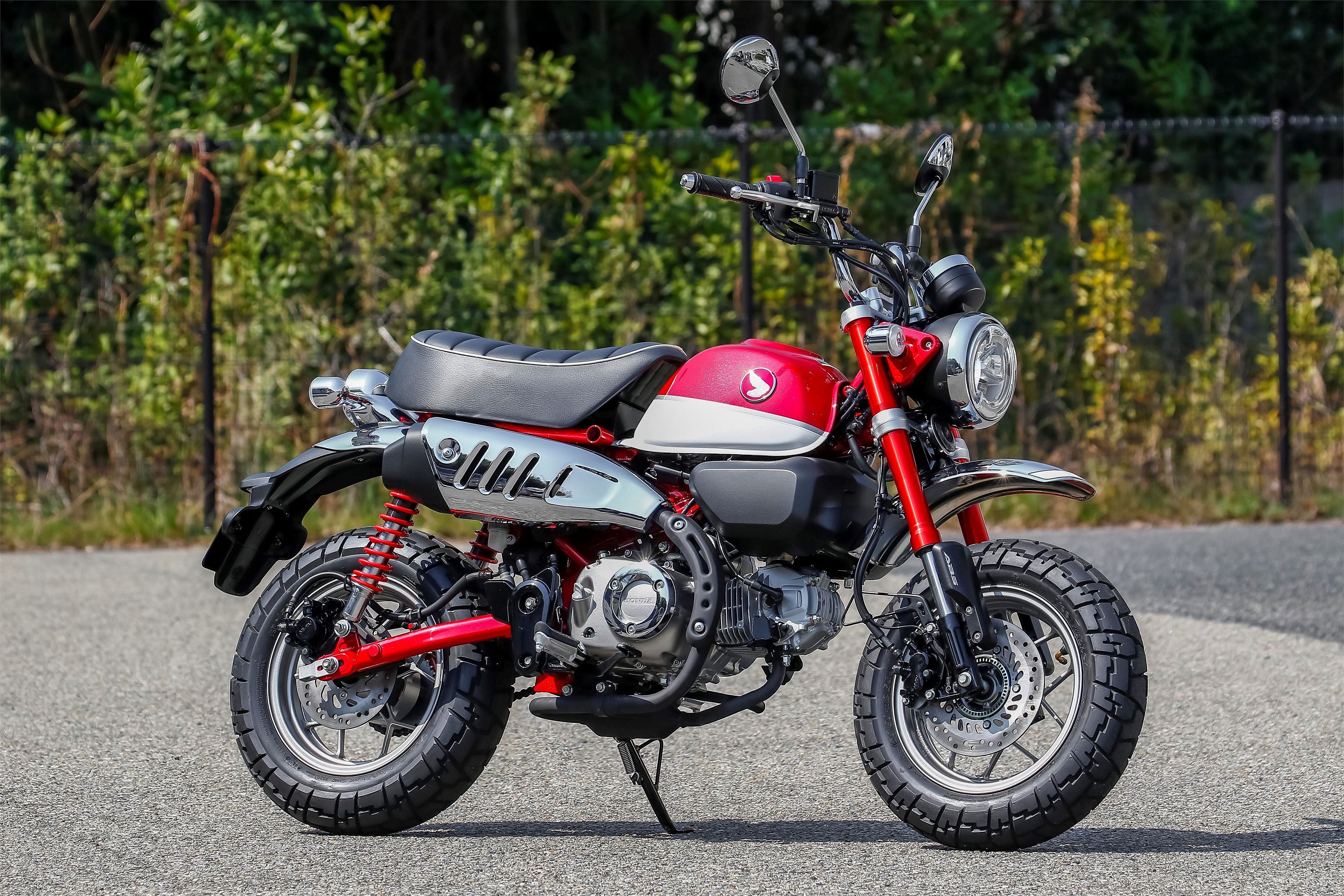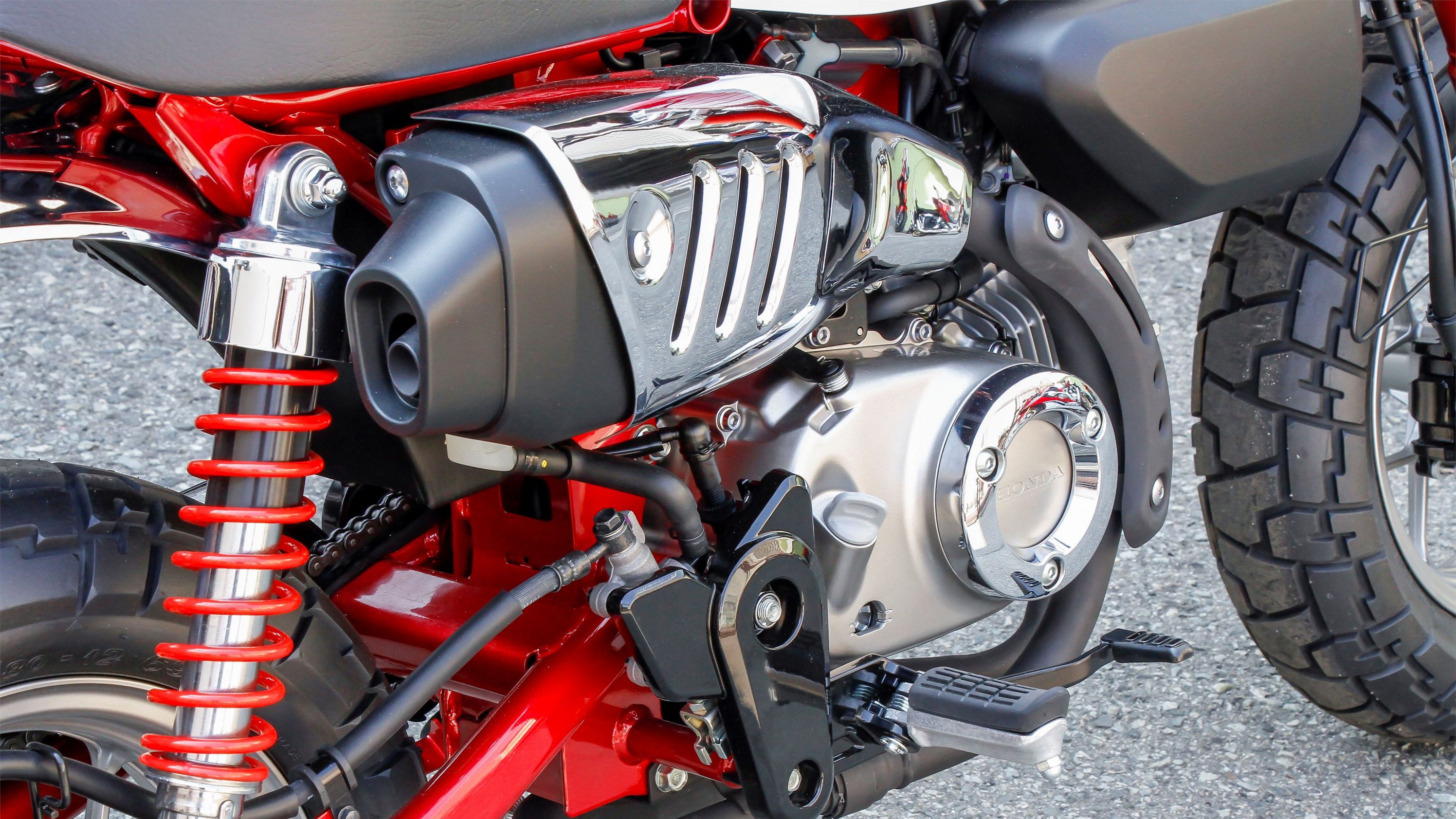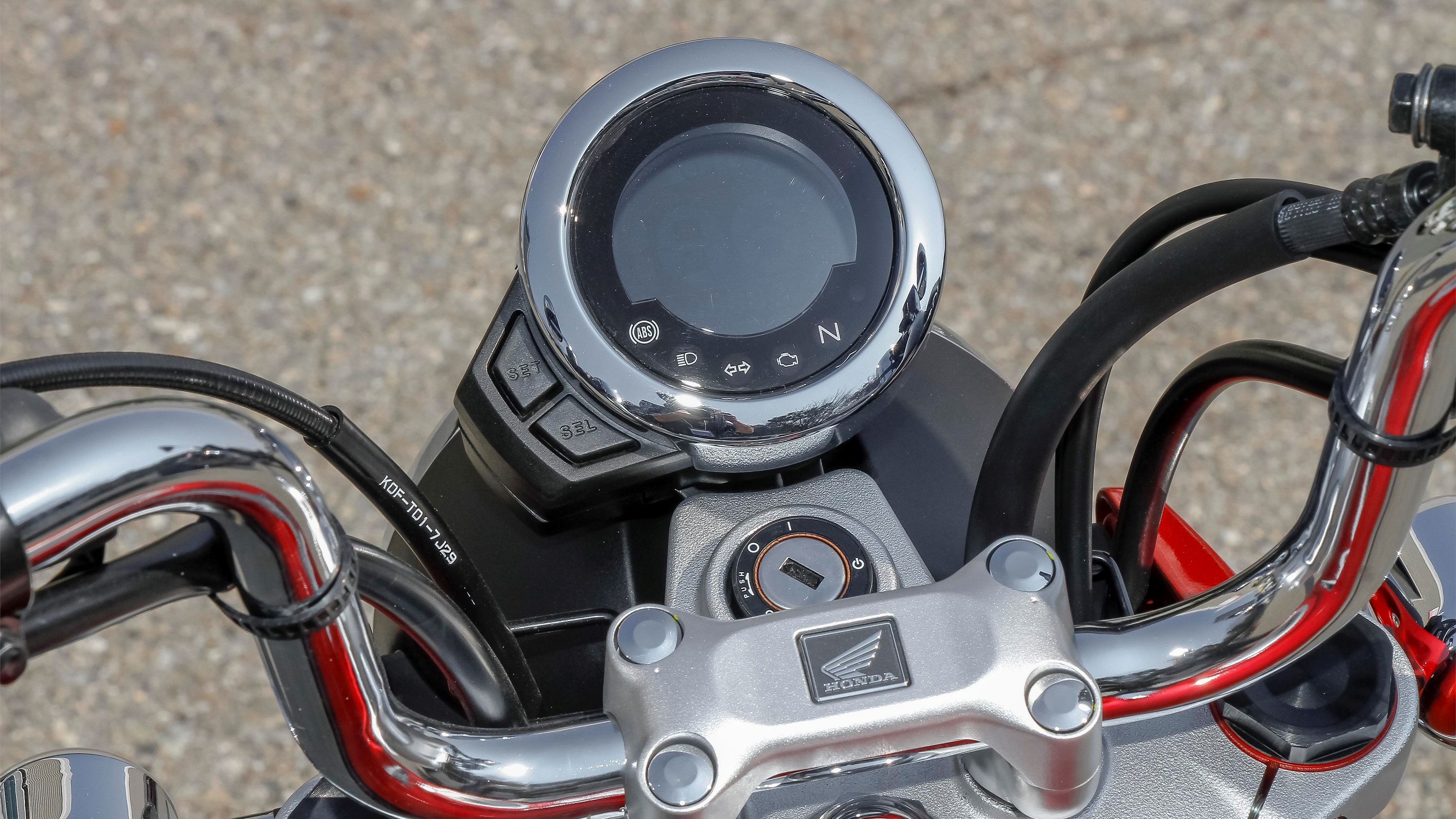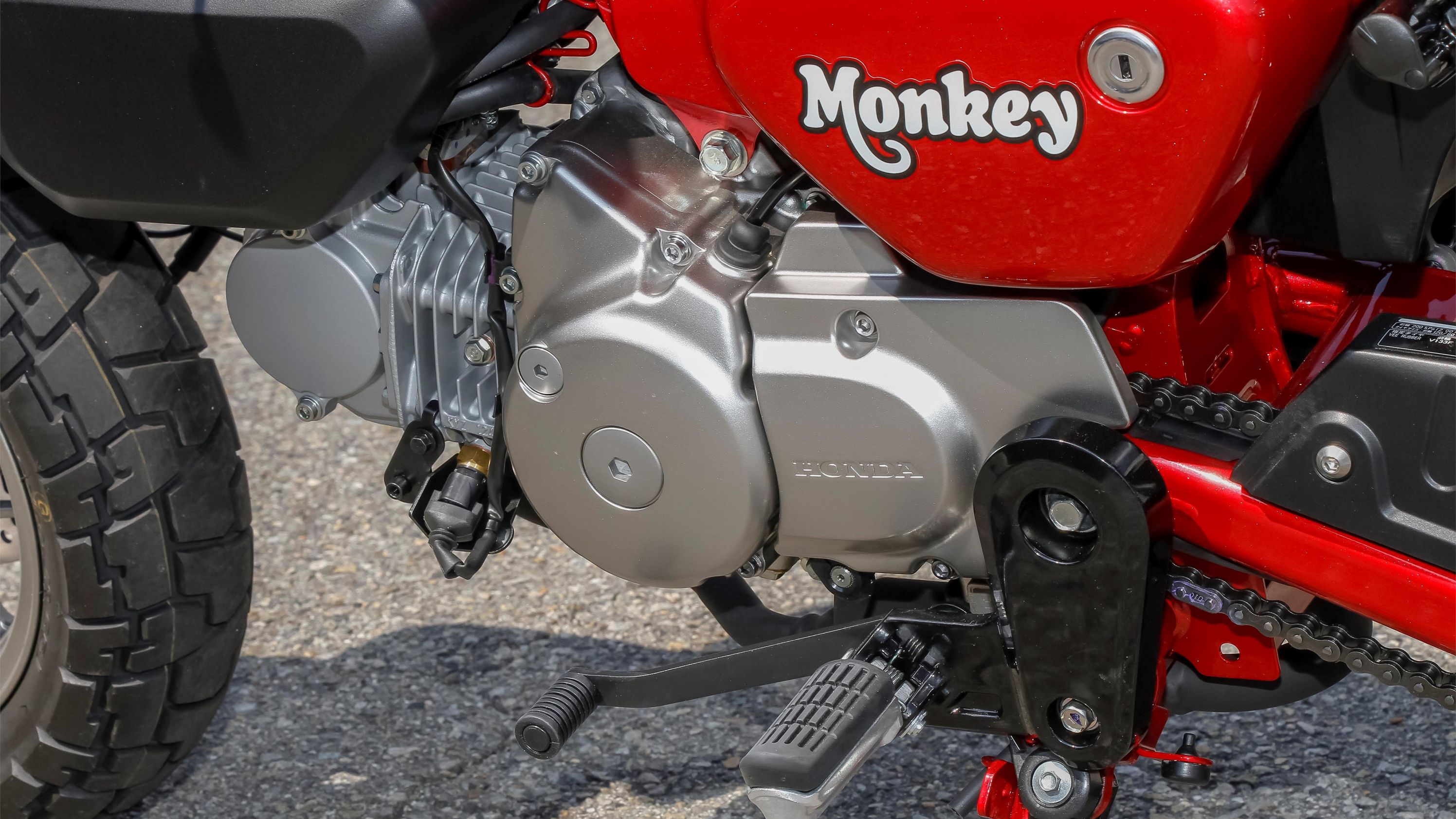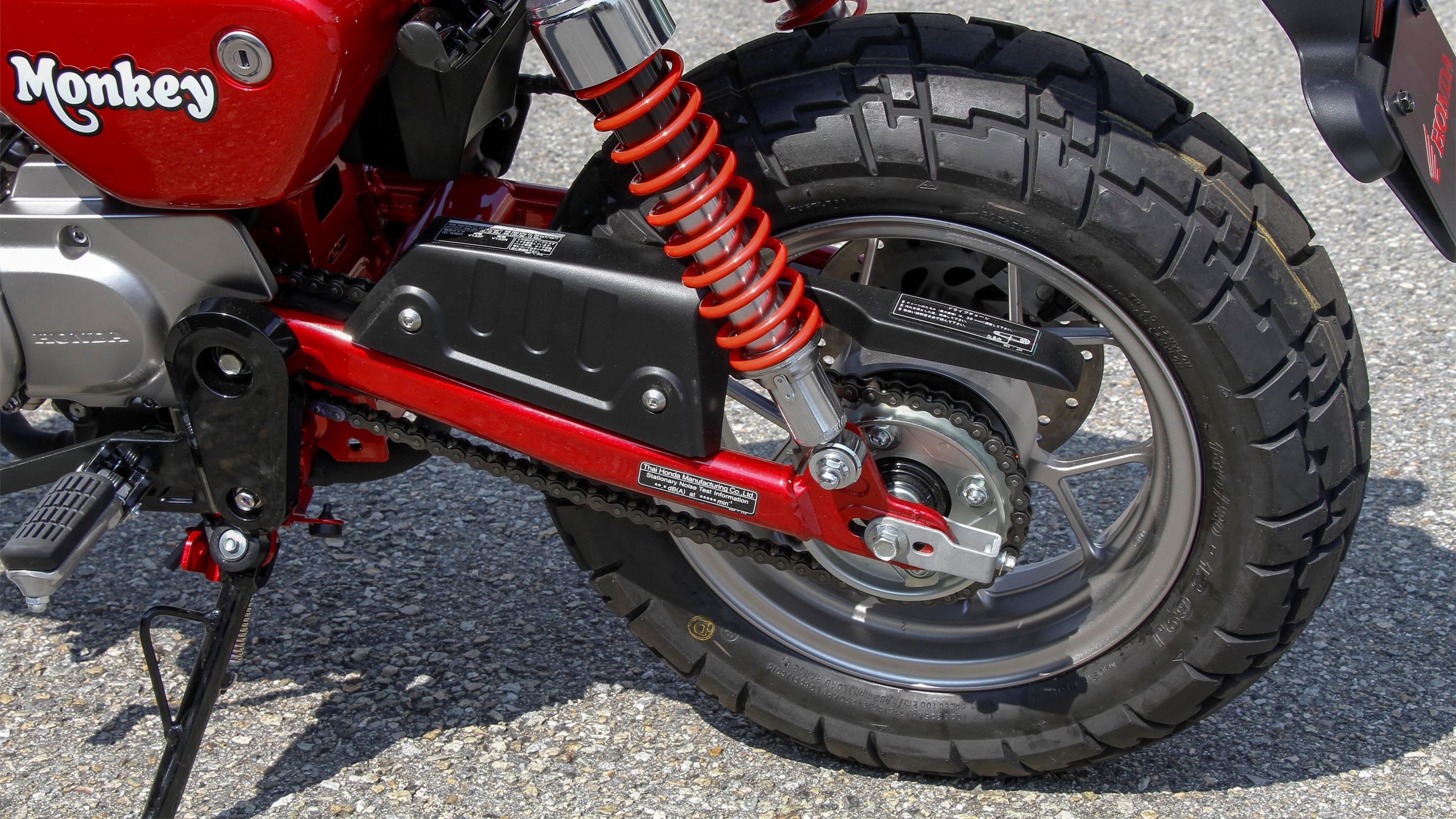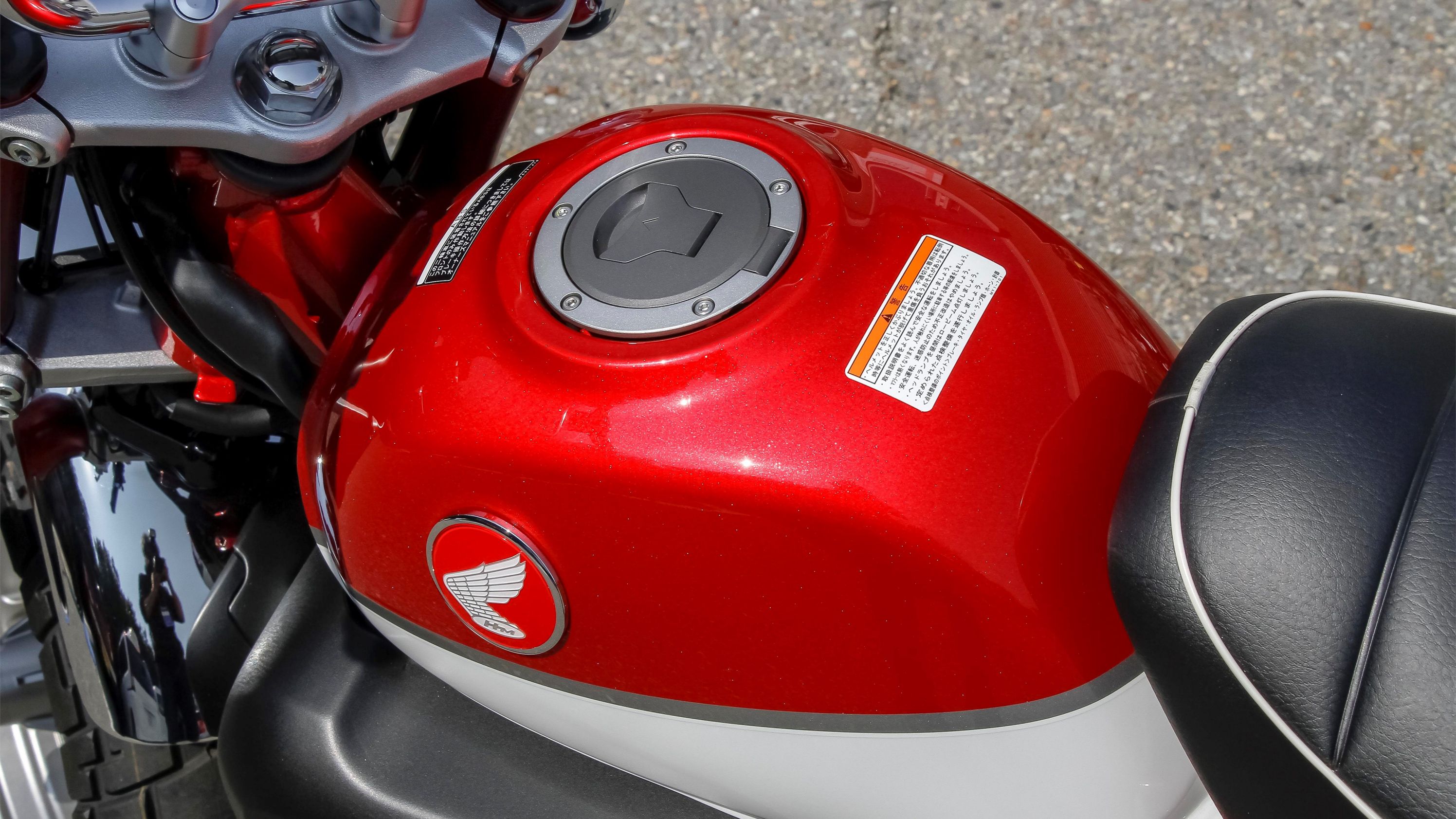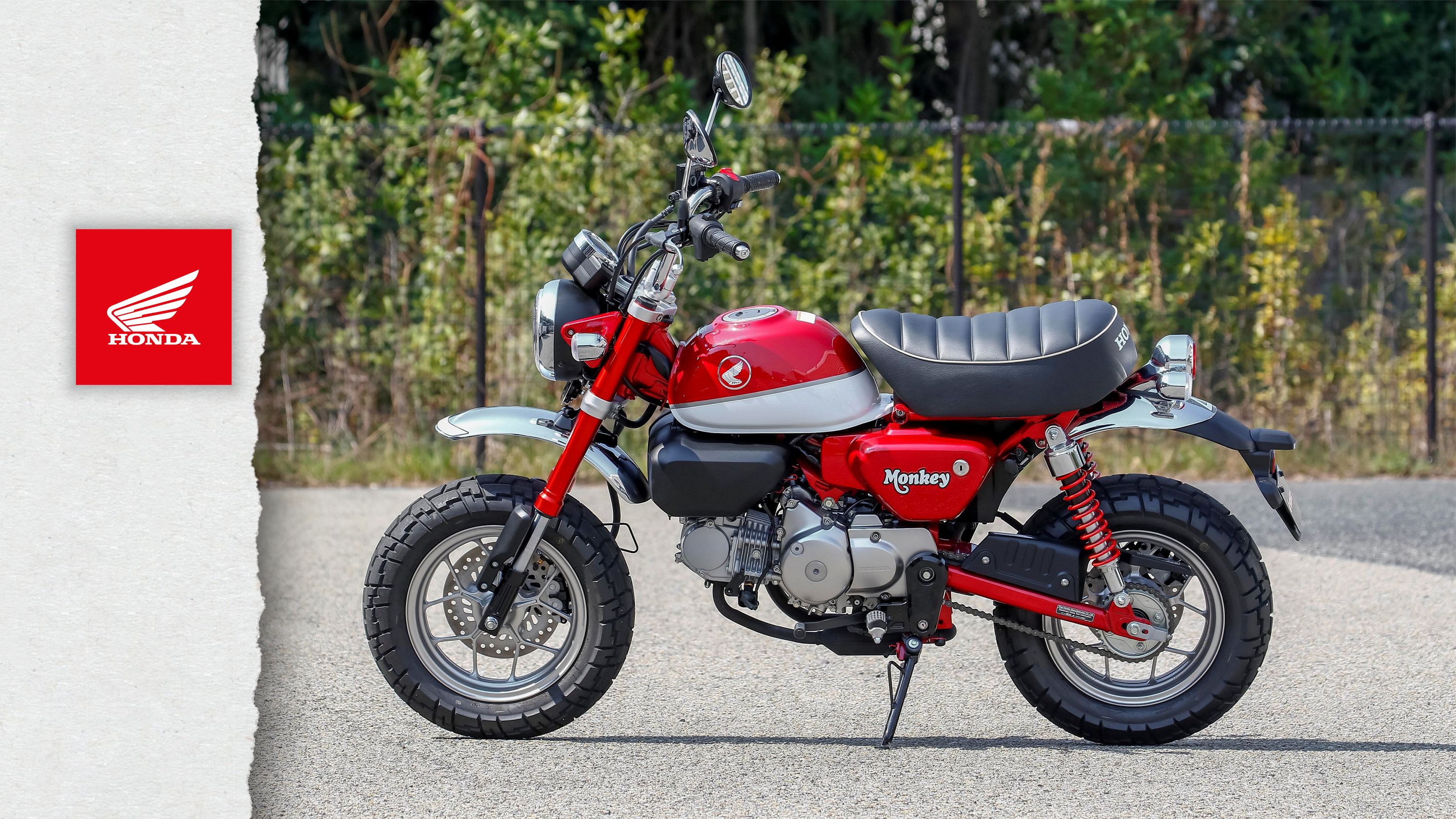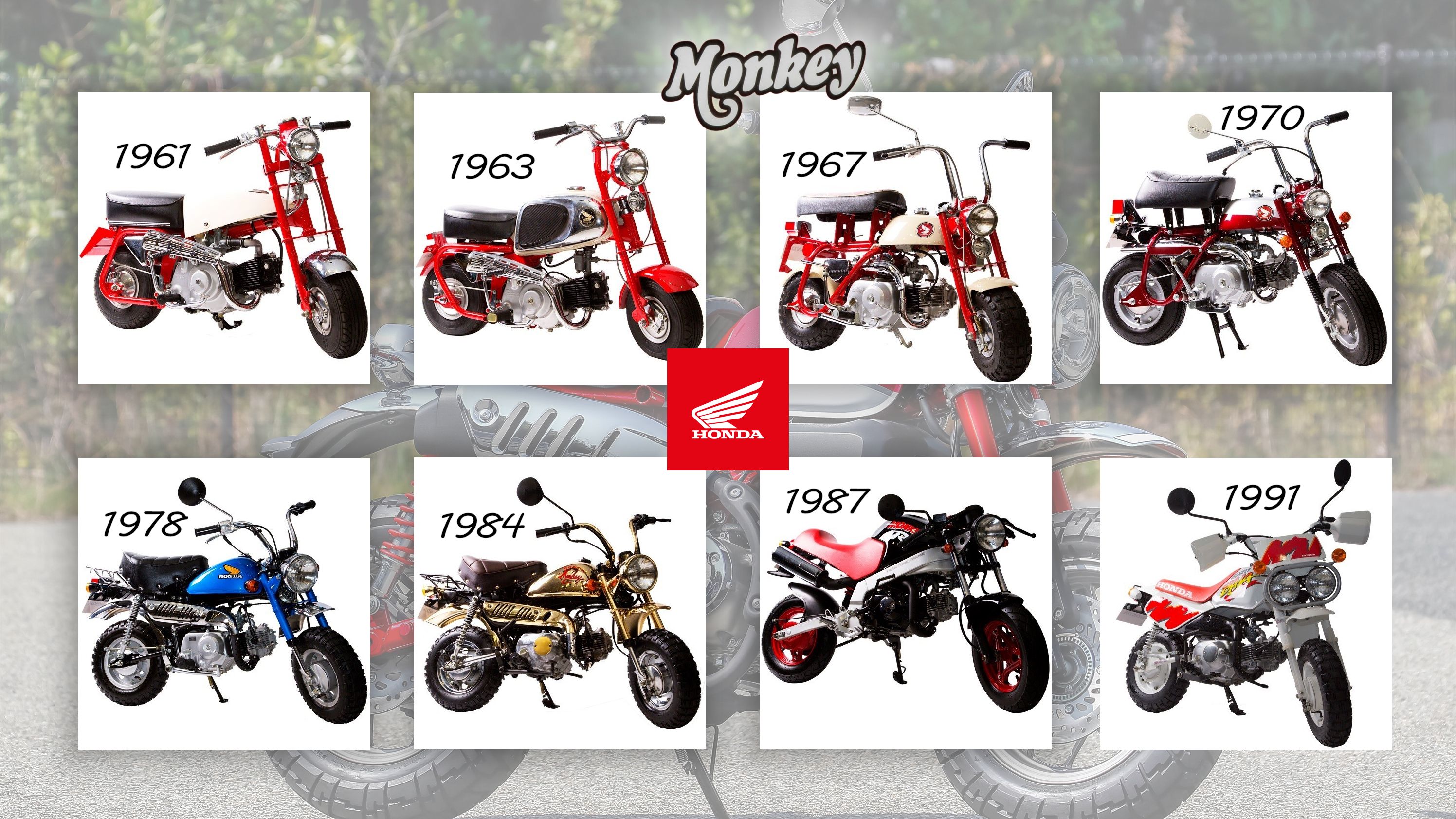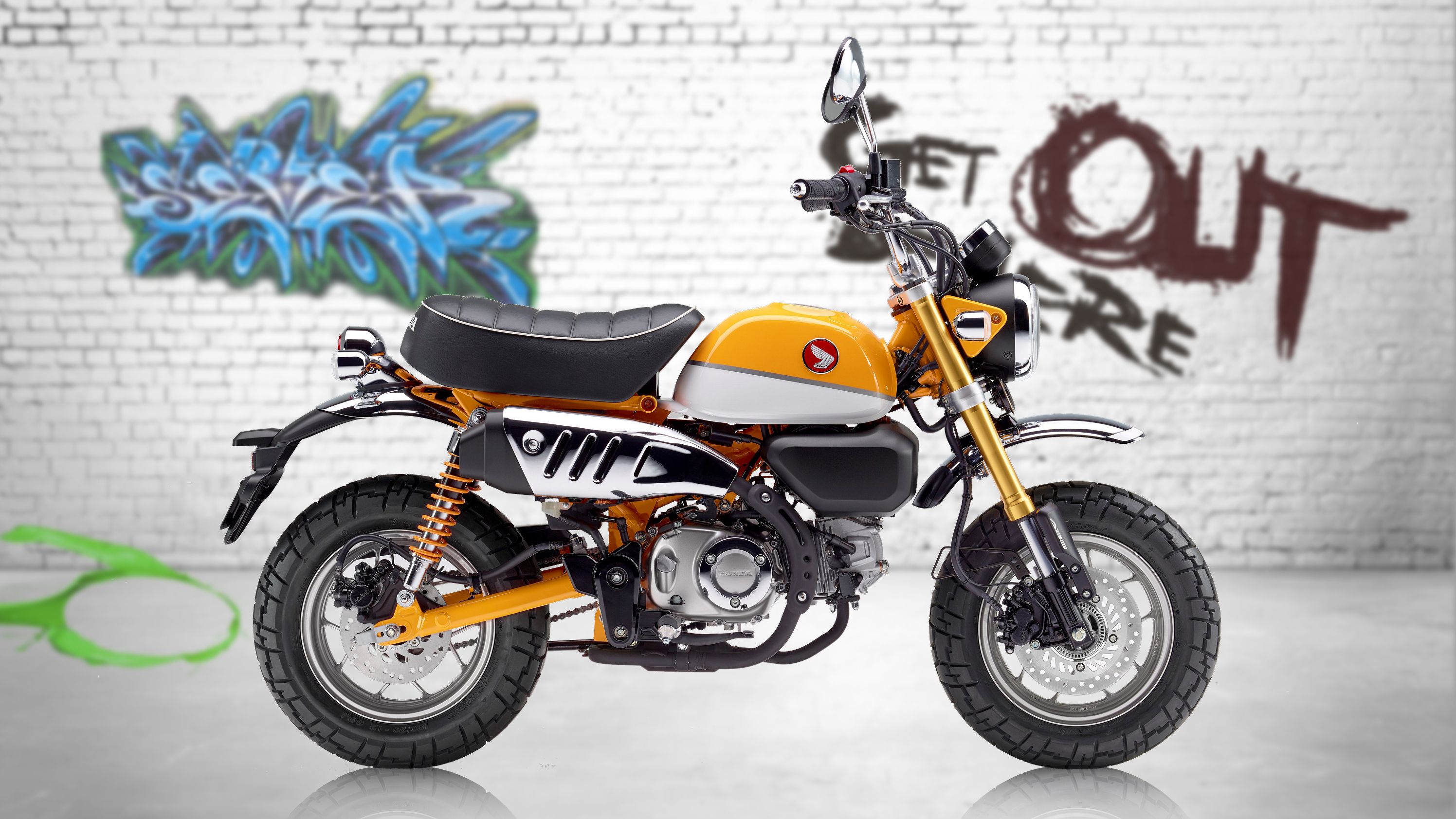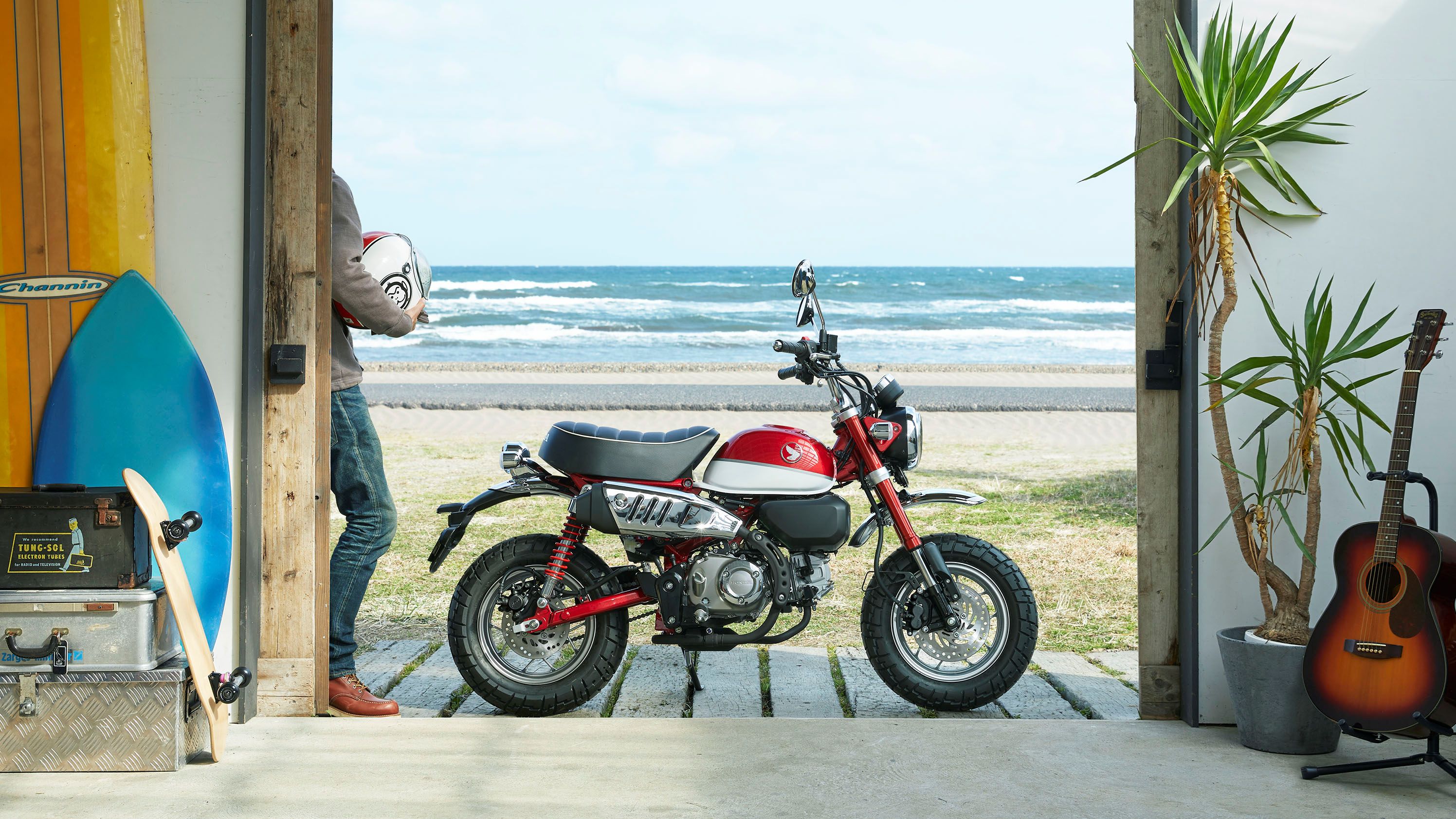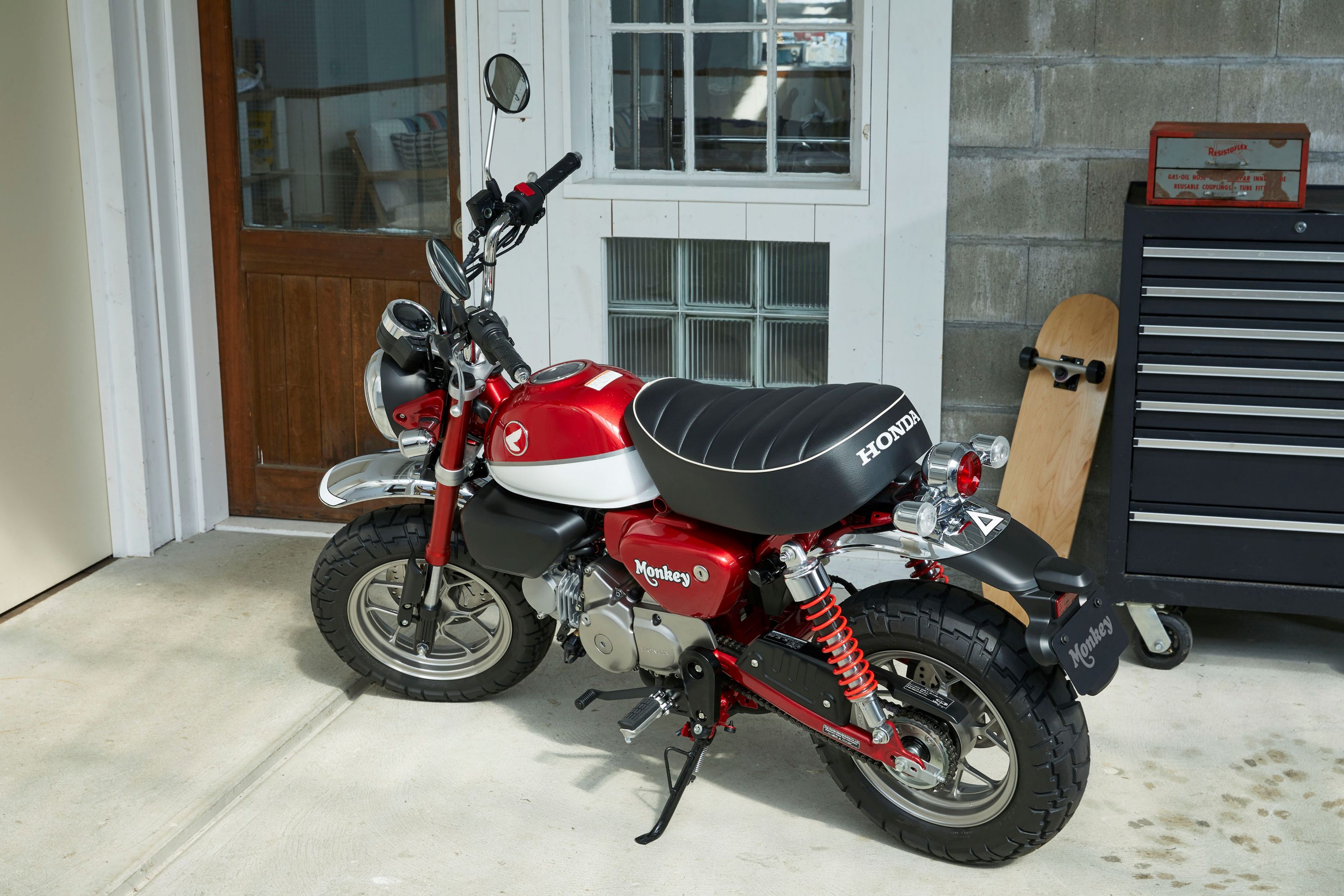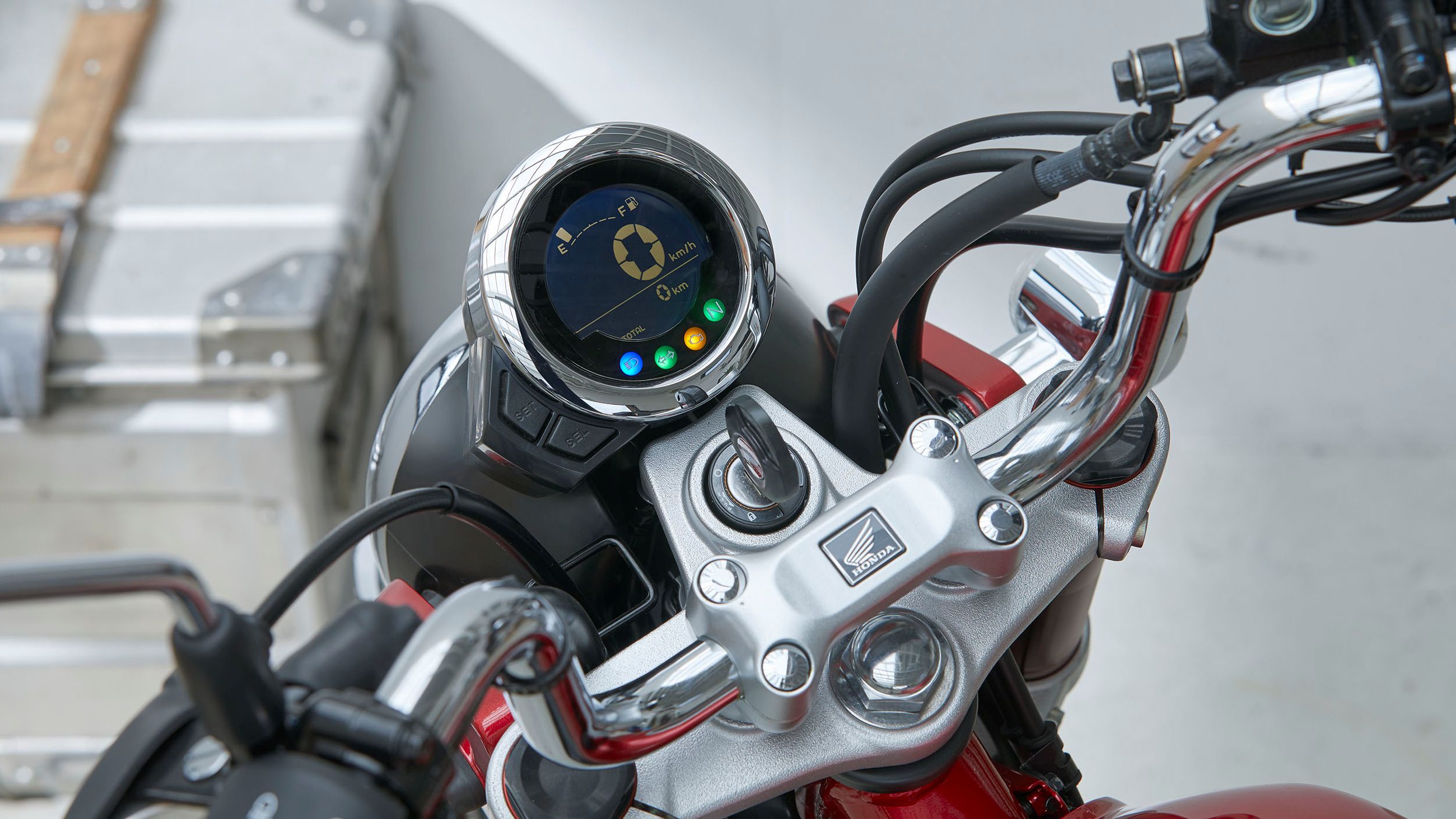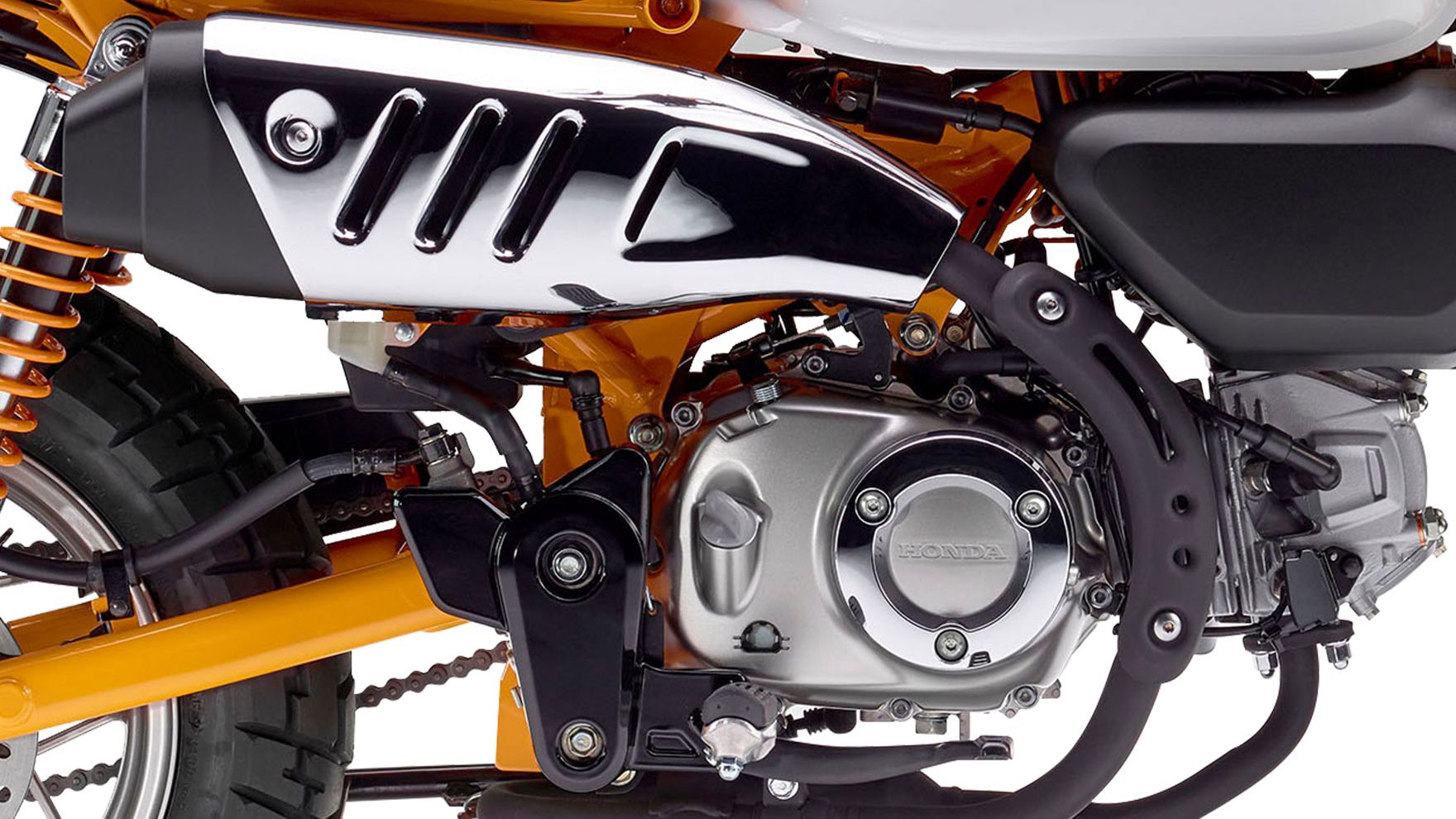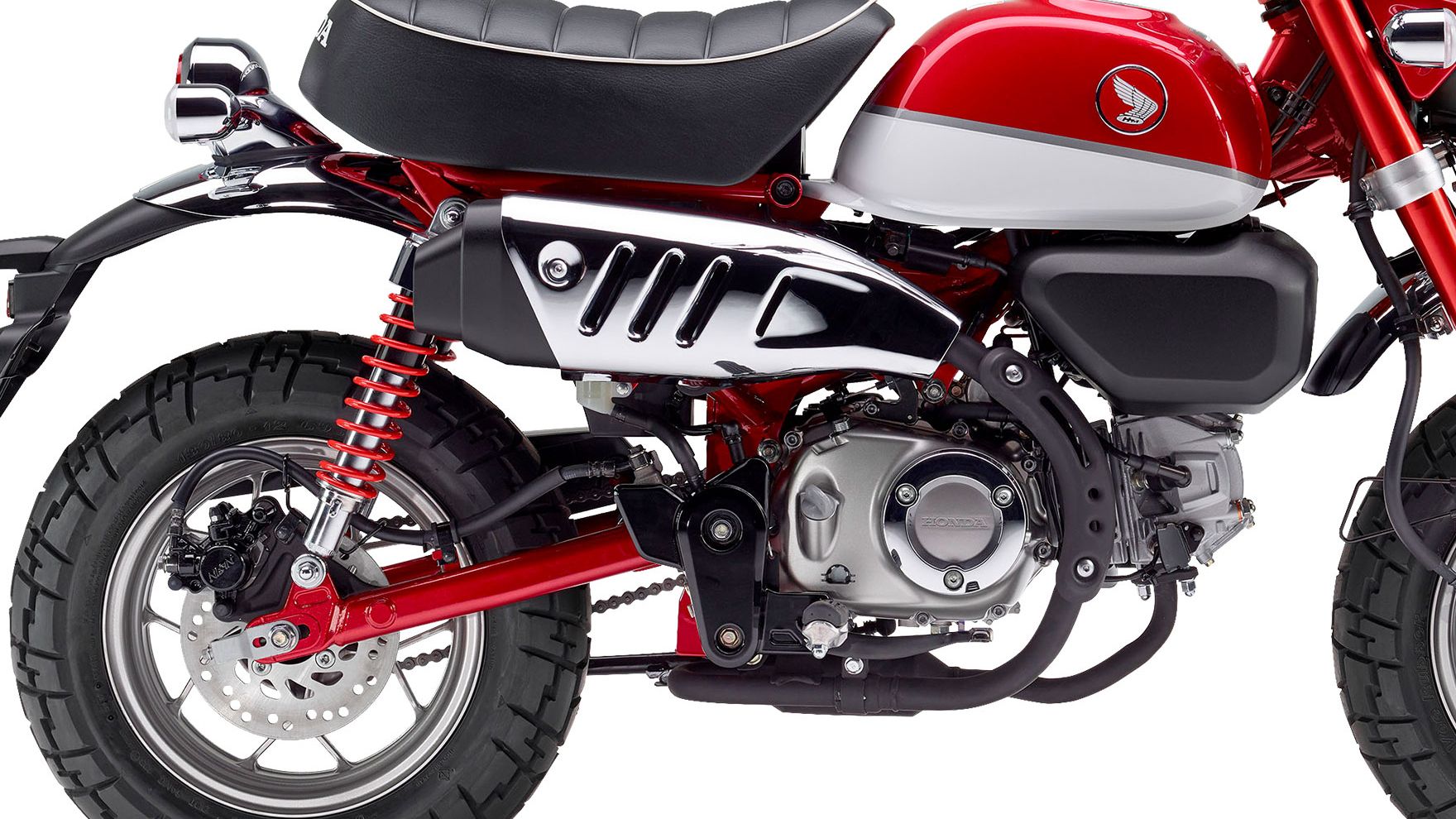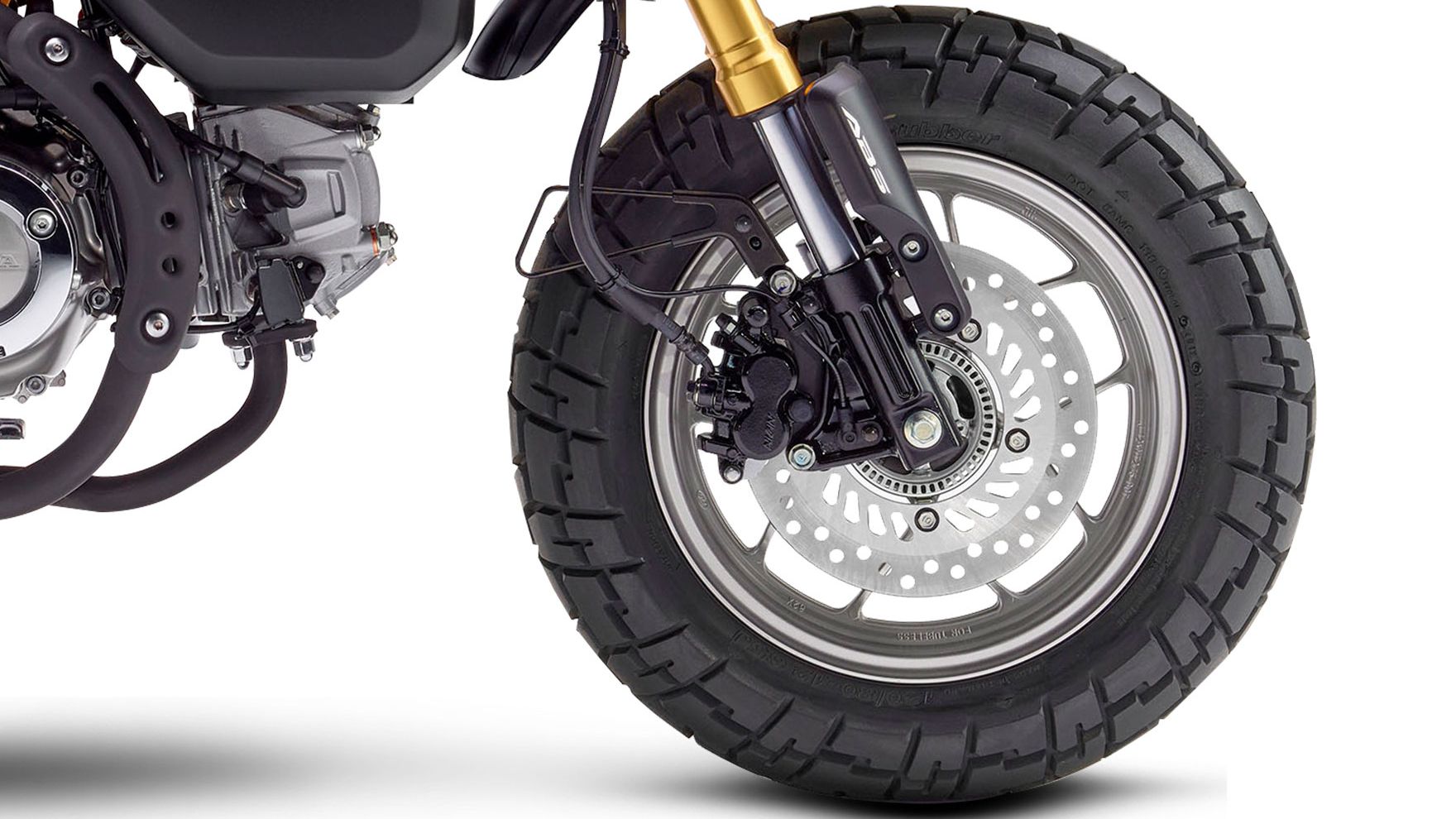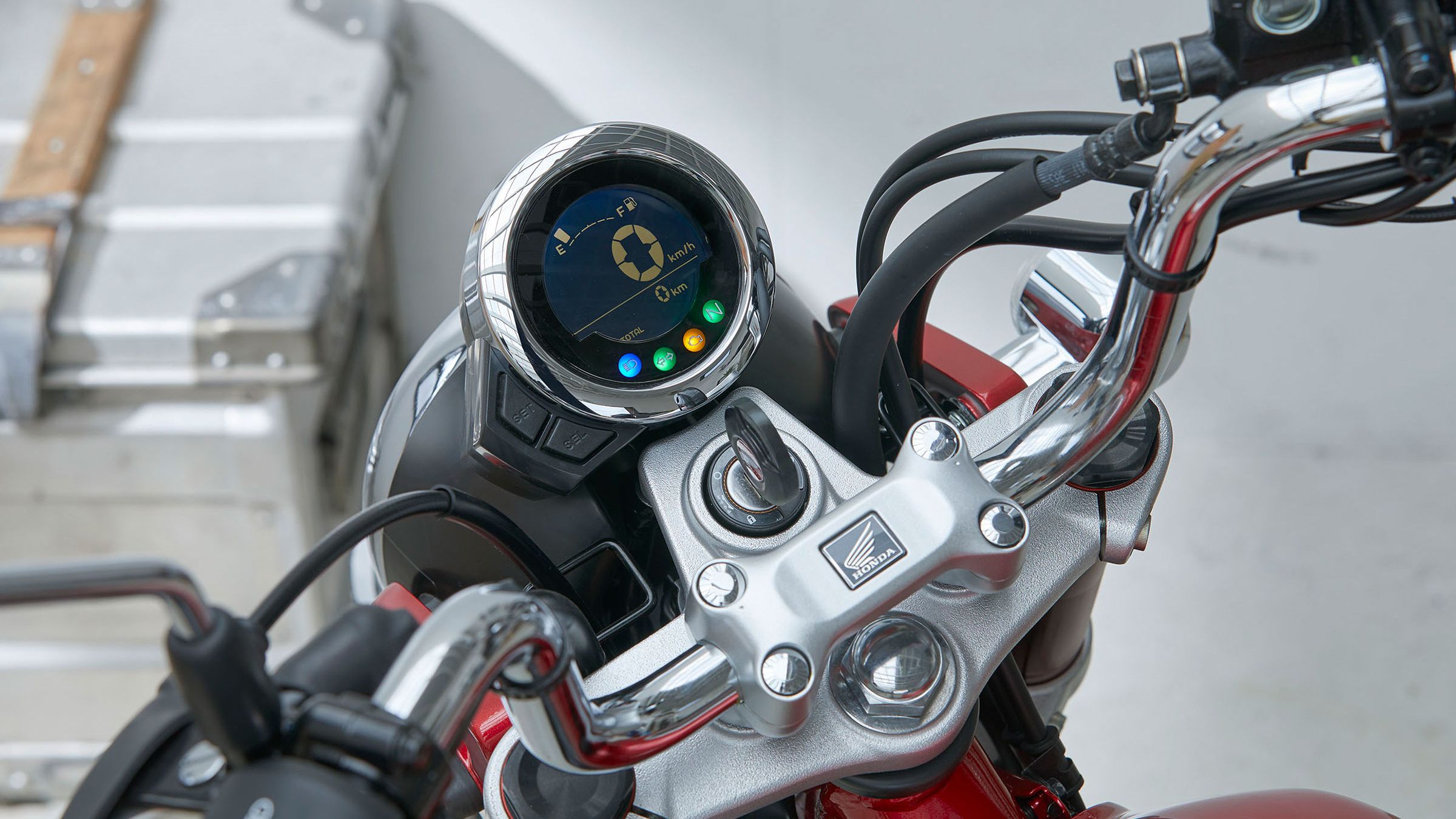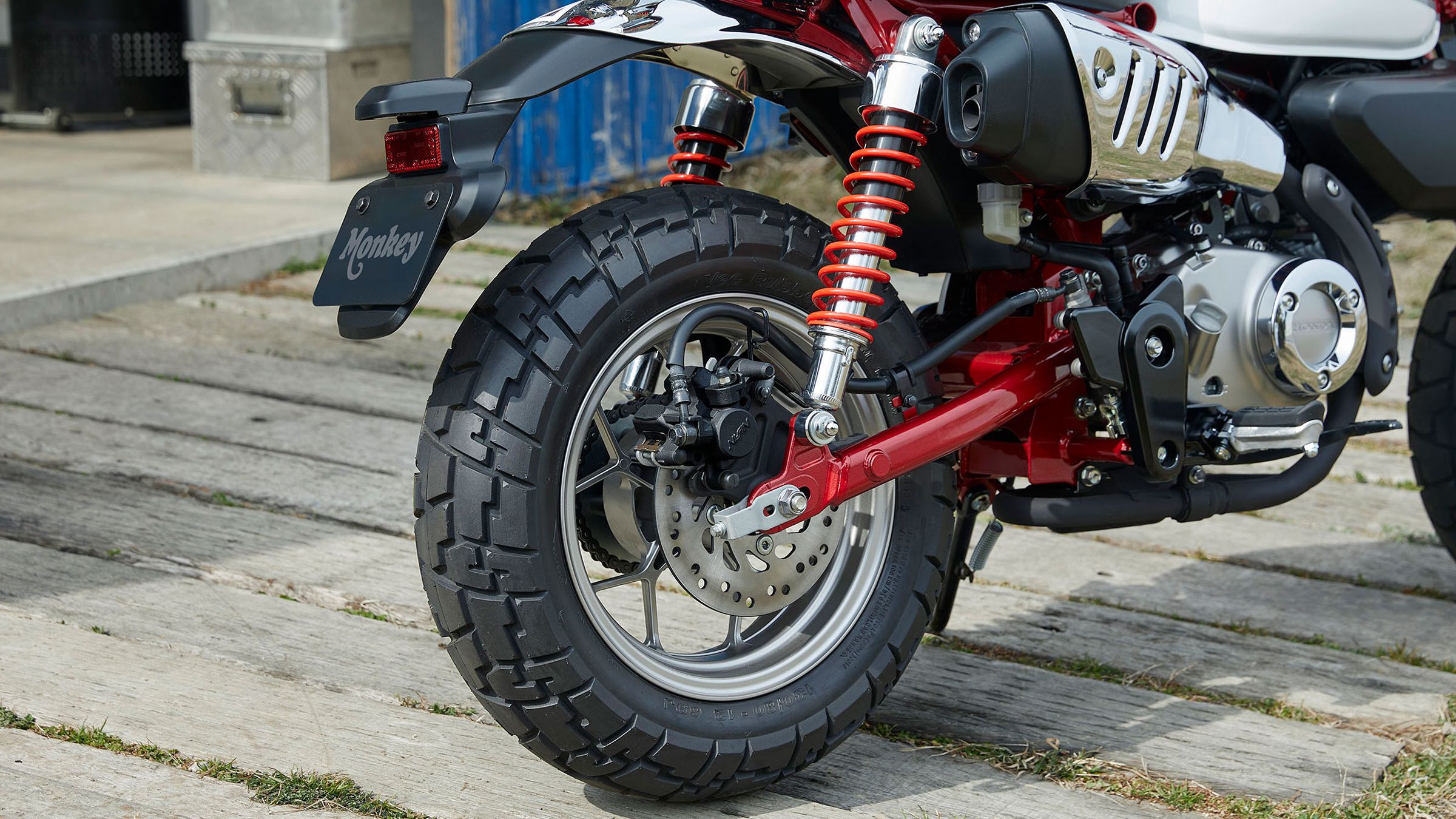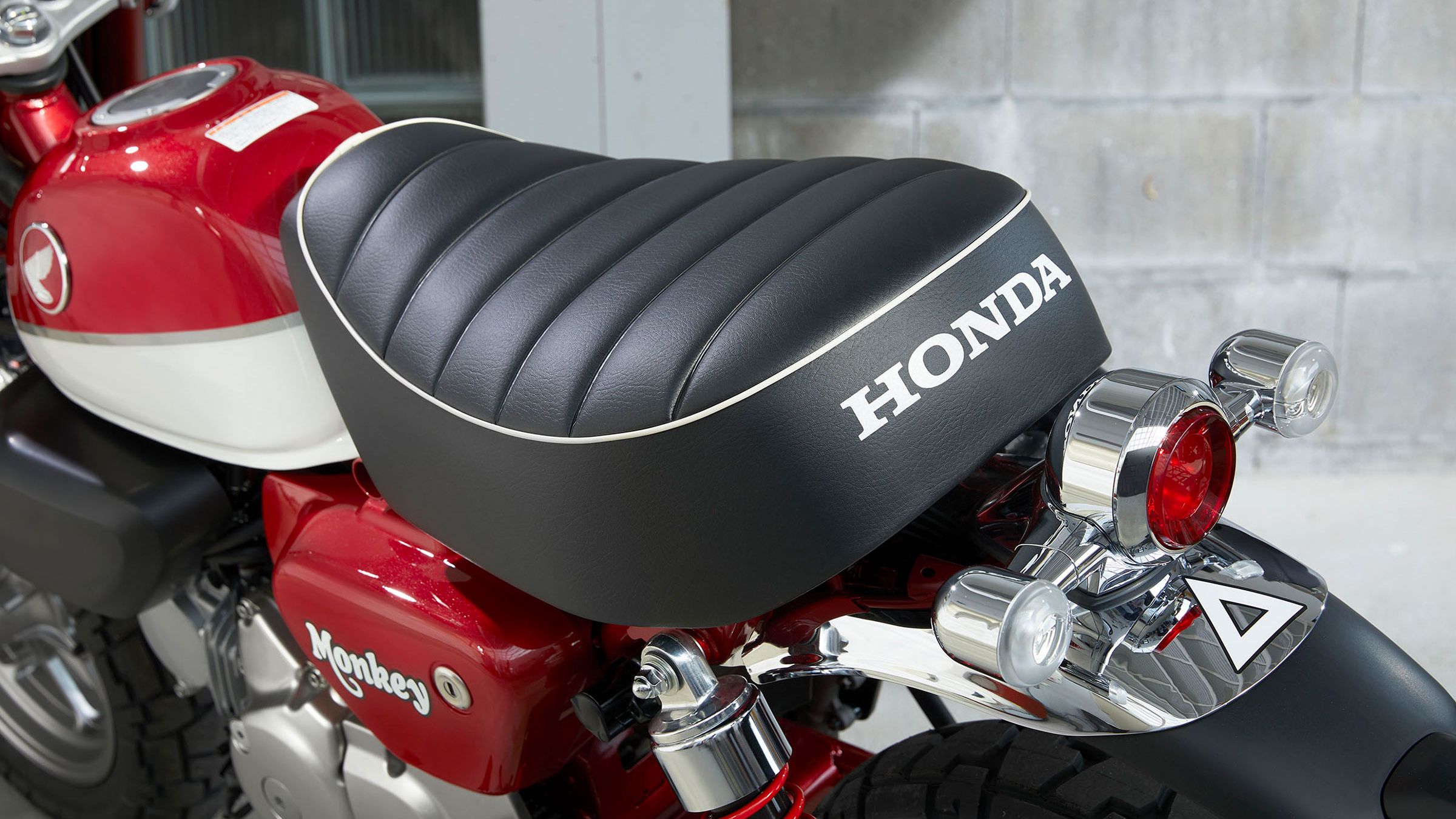Honda puts out a lot of fun products, it's true, but few machines can match the level of whimsy you get from the Honda Monkey. That's right folks, the iconic “Monkey Bike” that served as a mini self-Uber in Japanese amusement parks back in the '60s is back with a new look and powerplant for what the factory surely hopes is a new era of monkey madness. The 2019 update of this little pocket bike bears the genetic markers of the original without being a slave to it with a 9.25-horsepower modern powerplant, larger wheels (thank goodness) and disc brakes.
2018 - 2020 Honda Monkey
- Make: Array
- Model: 2018 - 2020 Honda Monkey
- Engine/Motor: single cylinder
- [do not use] Vehicle Model: Array
Honda Monkey Design
Right. No matter how you slice it, the Monkey falls within what most of us think of as the “mini-bike” category. Granted, it's not quite as diminutive as the originals that ran with five-inch solid wheels and a 49 cc engine with folding bars so you could shove it in a trunk, but it's still the runt of the litter even compared to Honda's cheeky little Grom with only 45.47 inches between contact-patch centers and an overall compact build.
Beefy tires and inverted front forks lend the Monkey some serious-business credibility right up front right up front}} with a classic round LED headlight can and turn signals that help tend to the street-legalities, and a tripletree-mount fender to contain the front-wheel fling. Mini-apes raise the hands enough to keep them out of your knees, mostly anyway, and that puts the mirrors high enough to see over your thighs.
A faux tuck-and-roll bench seat tuck-and-roll bench seat}} provides the pilot with room to scoot back as needed for legroom, within reason of course, and the seat itself rides at 30.5 inches off the ground so you can count on being reasonably uncramped when you deploy your training wheels. A full rear fender prevents that dirty stripe up your back with an LED taillight and rearward winkers to finish off the lights. What can I say? It's as cute as a bug; I just wanna' run up and pinch its cheeks. No giggety.
Honda Monkey Chassis
A steel backbone frame on the Monkey serves as the skeleton for our little simian friend, and the factory gave it the same consideration as its larger bikes with due attention given to the balance between flexion and support for what it claims is a supple ride. Hard to reconcile the word “supple” against such a small ride, but there it is. The front end floats on a pair of usd forks that deliver 3.93 inches of travel with dual, coil-over rear shocks that give up 4.09 inches of travel, measured at the axle.
In a departure from more recent vintages, the 12-inch aluminum wheels run with a 10-spoke design rather than the old drilled-solid hubs with a 120/80 and 130/80 hoop on the front and rear, respectively. These road-rubbers sport deep grooves and generous street flats for decent dual-purpose functionality, and will perform particularly well on soft surfaces.
Amazingly, and in contrast to the vast majority of small, classically designed bikes and scooters, the Monkey runs with all-around disc brakes. To compound our astoundment, Honda chucked on an Inertial Measurement Unit that reads the g-forces at work on the machine, and it works with the ABS feature to provide a more stable ride by providing some rear wheel-lift mitigation. Crazy stuff, right?
|
Frame: |
Steel backbone frame |
|
Caster Angle: |
25° |
|
Trail: |
82 mm |
|
Suspension, Front: |
USD fork, 3.9 in. (100 mm) axle travel |
|
Suspension, Rear: |
Twin shock, 4.0 in. (104 mm) axle travel |
|
Brakes, Front: |
Single 220 mm hydraulic disc with IMU-based ABS |
|
Brakes, Rear: |
Single 190 mm hydraulic disc |
|
Wheels: |
10-spoke cast aluminum |
|
Tires, Front/ Rear: |
120/80-12 65J/ 130/80-12 69J |
Honda Monkey Drivetrain
Power on the Monkey comes from the horizontally mounted, air-cooled thumper that looks similar to the original plant, but like the rest of the bike, it's a thoroughly modern item. The 52.4 mm bore and 57.9 mm stroke adds up to a total of 125 cc with a moderate compression ratio of 9.3-to-1. A simple SOHC times the dual-valve head -- hopefully with Honda's slick little screw-and-locknut valve adjuster -- and a PGM-FI system meters the induction.
In a departure from recent iterations, the MY18 Monkey dropped the manual kickstarter in favor of a button-kick for ease of operation. Had they called me ahead of time I'd have convinced them to leave it as a backup, but instead, here we are. Oh well, as small as this mill is, you should be able to pop-start it in a pinch; if not, give up riding now before it's too late.
Power delivery measures in with 9.25 horsepower at seven grand and 8.1 pounds o' grunt, and while that may seem a little underwhelming, it's important to keep in mind the 235-pound curb weight. Sound fun yet? You betcha'.
|
Engine: |
Air-cooled SOHC 4-stroke 2-valve |
|
Displacement: |
125 cc |
|
Bore x Stroke: |
52.4 x 57.9 mm |
|
Compression Ratio: |
9.3:1 |
|
Max. Power Output: |
9 hp (6.9 kW) @ 7,000 rpm |
|
Max. Torque: |
8.1 lb-ft (11 Nm) @ 5,250 rpm |
|
Carburetion: |
PGM-FI electronic fuel injection |
|
Clutch Type: |
Wet multi plate clutch |
|
Transmission Type: |
4 speed |
Honda Monkey Price
MSRP is $3,999 for the non-ABS model and $4,199 with ABS. Both come in Pearl Nebula Red, but only the non-ABS ride is available in Pearl Glittering Blue.
|
Color: |
|
|
└ 2018: |
Banana Yellow/Ross White, Pearl Nebula Red/Ross White, Pearl Shining Black/Ross White |
|
└ 2019: |
Pearl Nebula Red - non-ABS also Banana Yellow |
|
└ 2020: |
Pearl Nebula Red - non-ABS also Pearl Glittering Blue |
|
Price: |
$3,999, (ABS: $4,199) |
Honda Monkey Competitors
It's a street-legal mini-bike, no way around it, and as such there really isn't really much in the way of toe-to-toe. Sure, we have similarly-sized rides out there, but most use the swing-mount drive which shoves them over into scooter territory.
Kawasaki Z125 Pro
There's the popular little pocket bike category populated with the likes of the Z125 PRO by Kawasaki, the KYMCO K-Pipe and Honda's own groundbreaking Grom that started it all. These rides are quite similar to the Monkey in size and stature with buck-and-a-quarter engines to push them, but there remains some very decisive differences.
The three competitors kind of look like what you get when you leave a proper nakedsportbike in the dryer too long, but with none of the “mini-bike vibe” the Monkey puts off. None of the Monkey-bike vibe either, just altogether different in spite of the similarities. I think it's fair to say the Monkey is unlikely to create a niche all its own -- probably closer to the truth to say it will cull some customers from the same buyer base as the above -- but its street-legal status and deep historical roots will no doubt appeal to young riders with unimpeachable taste.
Read our full review of the Kawasaki Z125 Pro.
He Said
“There was a time that I would have absolutely pined for such a ride, back when I was about 12 years old or so, but we aren't talking about me here, I'm not in the market. With '60s and '70s style enjoying a resurgence in interest (not just here, but in the automotive field as well), I can see this ride making a hit, especially with the name recognition that comes along with the Monkey moniker. It could also see service as a pit bike, riding around staging areas for events centered around more serious machines. Well done, Honda.”
She Said
My wife and fellow motorcycle writer, Allyn Hinton, says, “I was wholly surprised to find such a substantial bike in such a small package. The LED lighting is premium. There's a surprising amount of tech present, including a fully-digital instrument cluster. Compared to the Grom, these two are like brothers-from-another-mother. They both look like big bikes somebody left in the dryer too long: the Grom in sportbike-styling and the Monkey in standard UJM styling.
Honda Monkey Specifications
|
Engine & Drivetrain: |
|
|
Engine: |
Air-cooled SOHC 4-stroke 2-valve |
|
Displacement: |
125 cc |
|
Bore x Stroke: |
52.4 x 57.9 mm |
|
Compression Ratio: |
9.3:1 |
|
Max. Power Output: |
9 hp (6.9 kW) @ 7,000 rpm |
|
Max. Torque: |
8.1 lb-ft (11 Nm) @ 5,250 rpm |
|
Carburetion: |
PGM-FI electronic fuel injection |
|
Clutch Type: |
Wet multi plate clutch |
|
Transmission Type: |
4 speed |
|
Chassis: |
|
|
Frame: |
Steel backbone frame |
|
Caster Angle: |
25° |
|
Trail: |
82 mm |
|
Suspension, Front: |
USD fork, 3.9 in. (100 mm) axle travel |
|
Suspension, Rear: |
Twin shock, 4.0 in. (104 mm) axle travel |
|
Brakes, Front: |
Single 220 mm hydraulic disc - ABS model: with IMU-based ABS |
|
Brakes, Rear: |
Single 190 mm hydraulic disc |
|
Wheels: |
10-spoke cast aluminum |
|
Tires, Front/ Rear: |
120/80-12 65J/ 130/80-12 69J |
|
Dimensions & Capacities: |
|
|
L x W x H: |
67.3 x 29.7 x 40.5 in. (1,710 x 755 x 1,029 mm) |
|
Wheelbase: |
45.5 in. (1,155 mm) |
|
Seat Height: |
30.5 in. (776 mm) |
|
Ground Clearance: |
6.3 in. (160 mm) |
|
Turning radius: |
6.2 ft (1.9 m) |
|
Curb Weight: |
234 lbs (107 kg) (ABS: 238 lbs (108 kg) |
|
Oil Capacity: |
Upper 1.2 qt ; lower 0.95 qt |
|
Fuel Tank Capacity: |
1.47 gal. (5.6 liters) |
|
Fuel Consumption (WMTC mode): |
157 mpg (67km/liter) |
|
Top Speed: |
65 mph (est) |
|
Electricals: |
|
|
Starter: |
Electric |
|
Battery: |
YTZ5S |
|
Headlight: |
LED |
|
Taillight: |
LED |
|
Details: |
|
|
Color: |
|
|
└ 2018: |
Banana Yellow/Ross White, Pearl Nebula Red/Ross White, Pearl Shining Black/Ross White |
|
└ 2019: |
Pearl Nebula Red - non-ABS also Banana Yellow |
|
└ 2020: |
Pearl Nebula Red - non-ABS also Pearl Glittering Blue |
|
Price: |
$3,999, (ABS: $4,199) |
Further Reading
Honda
Read more Honda news.


